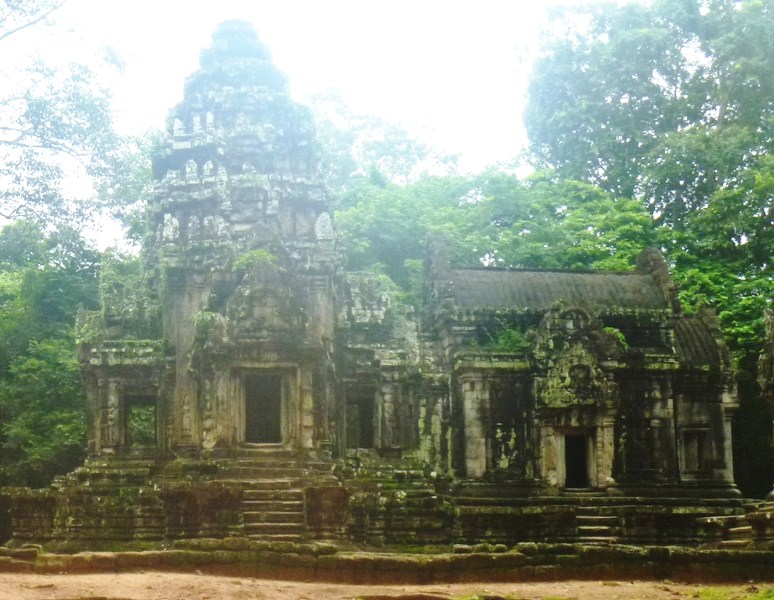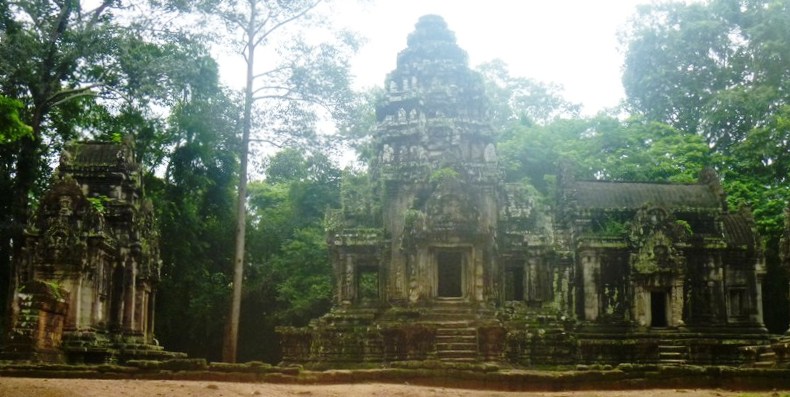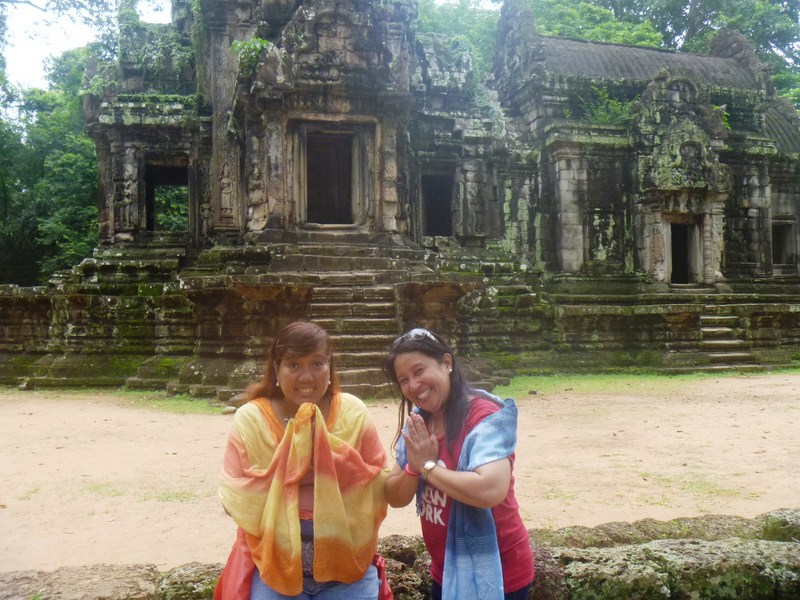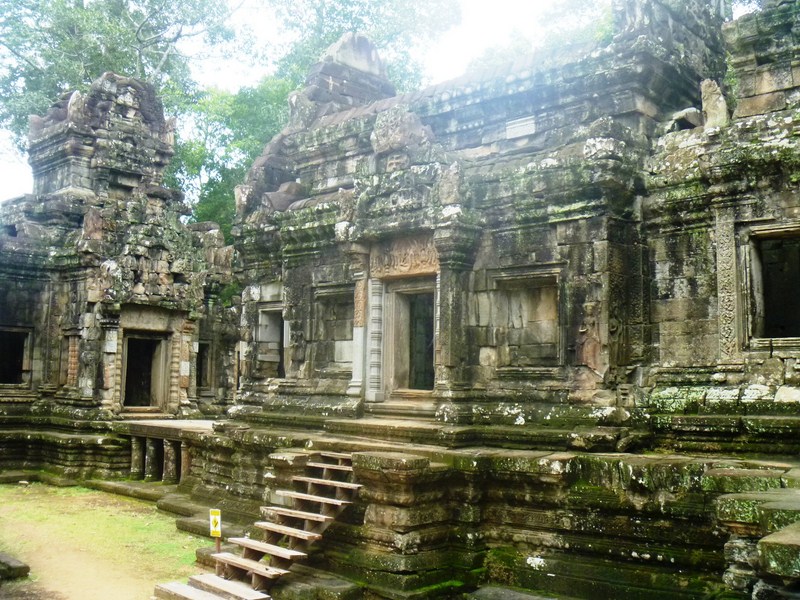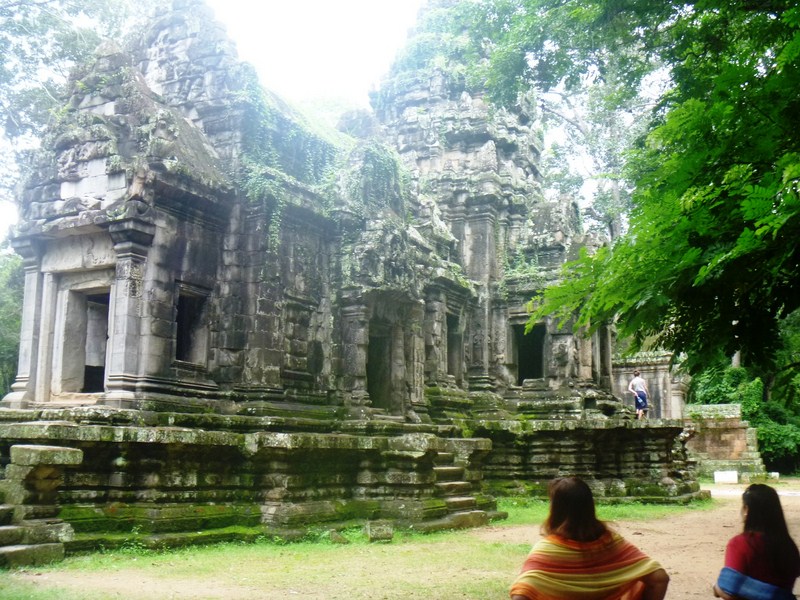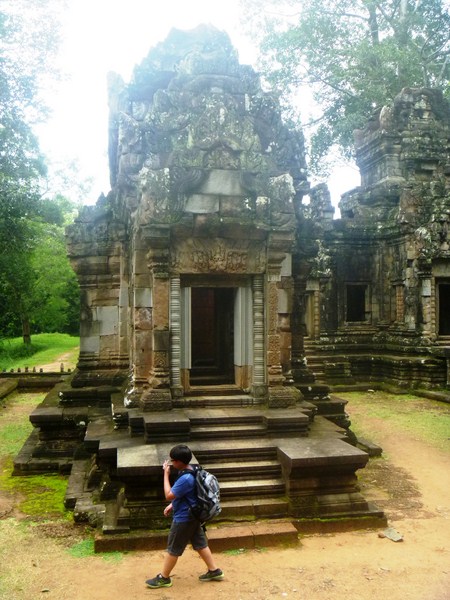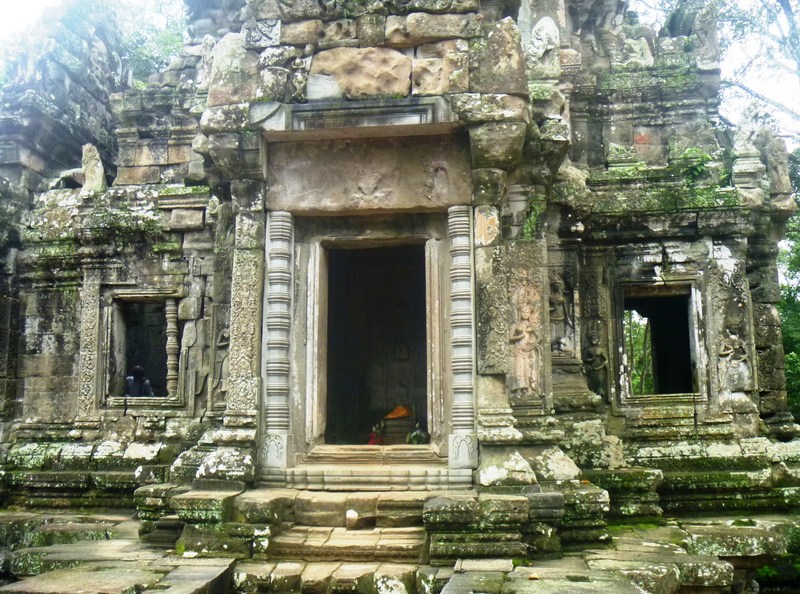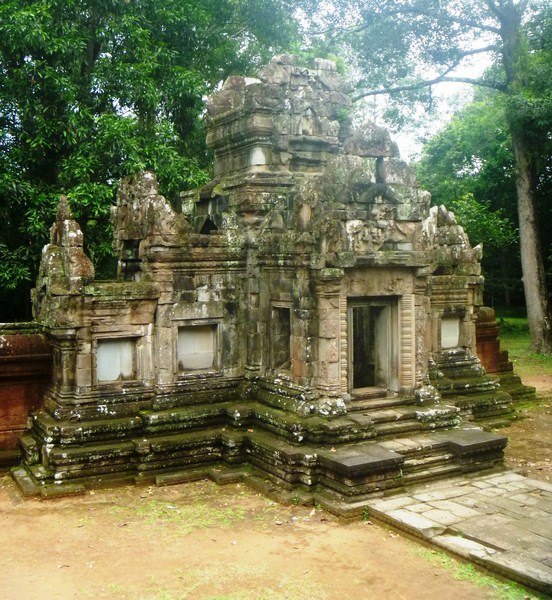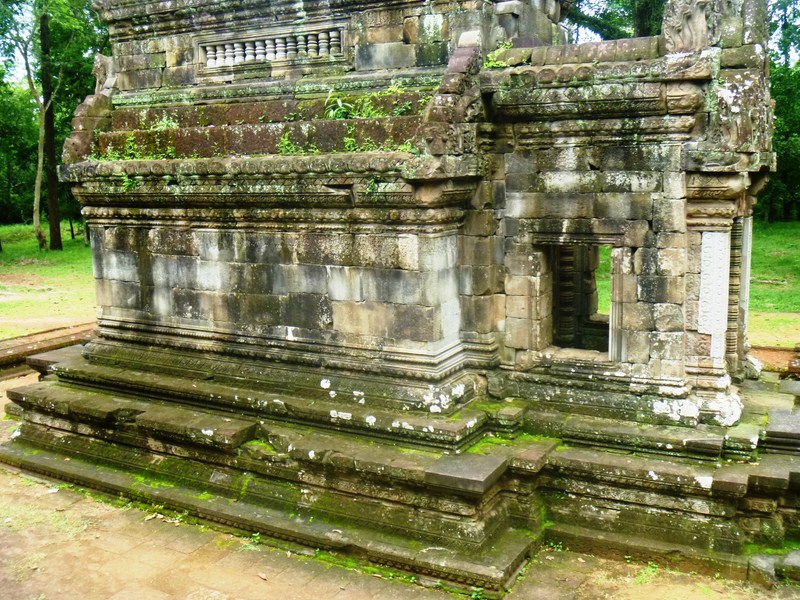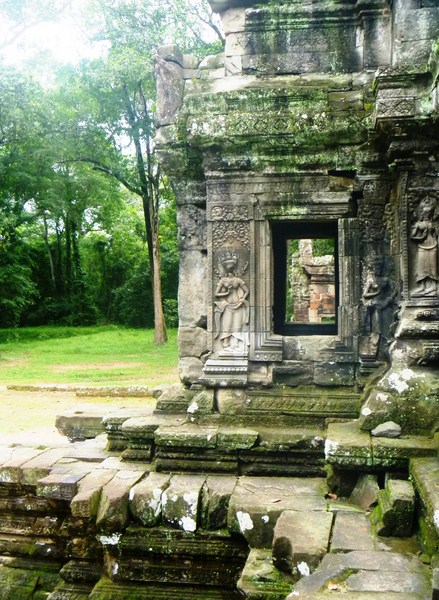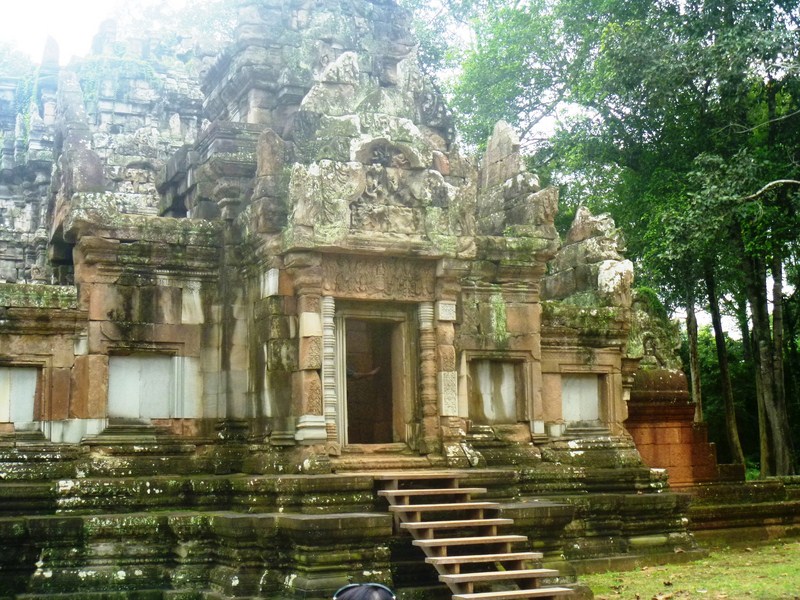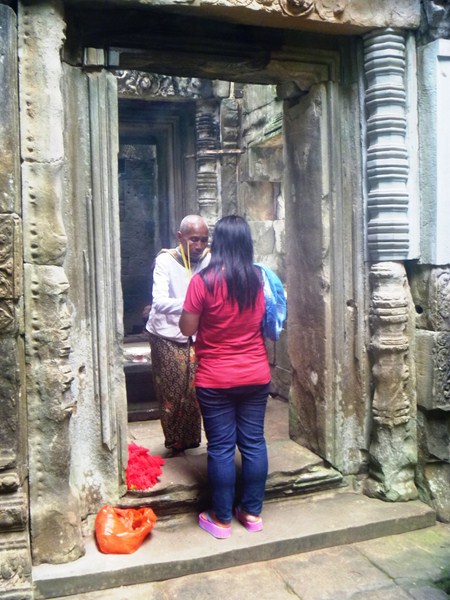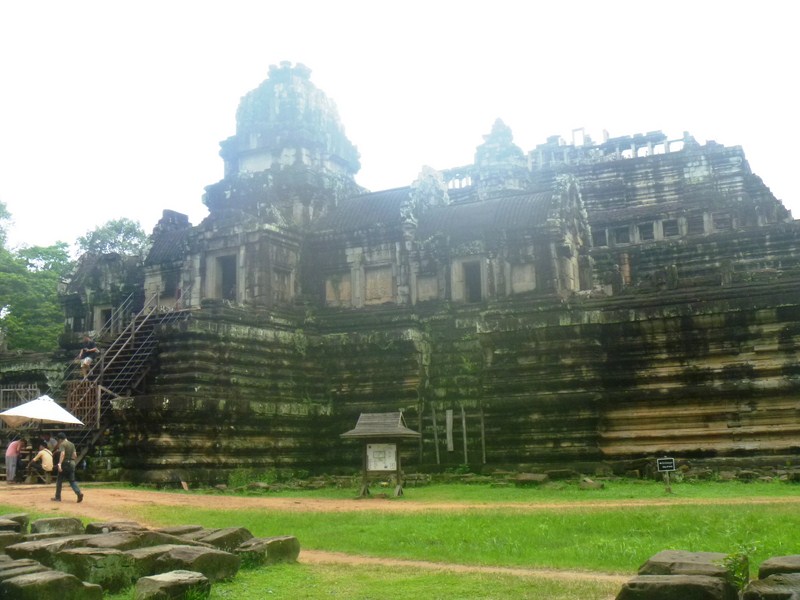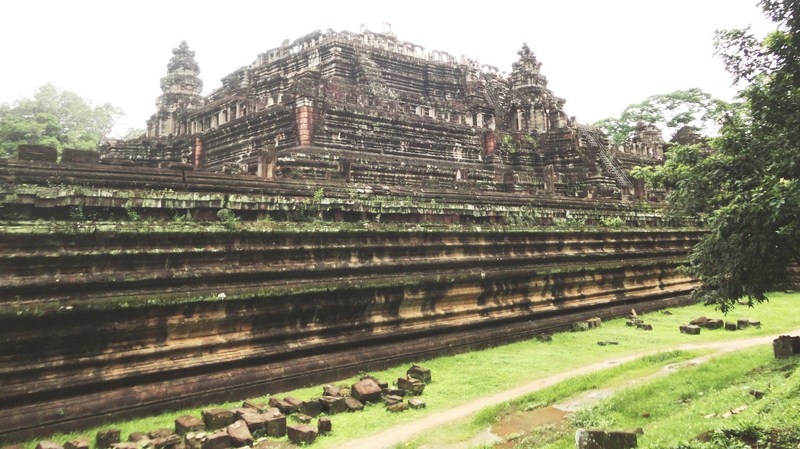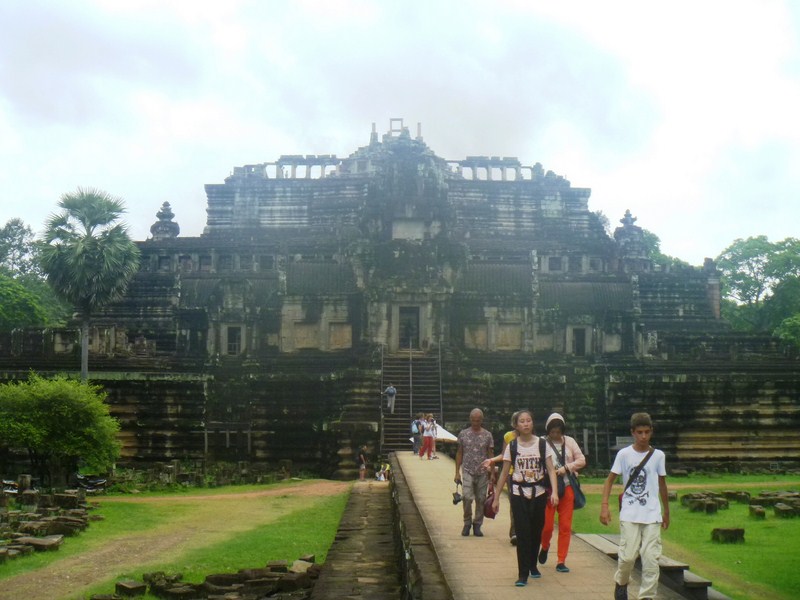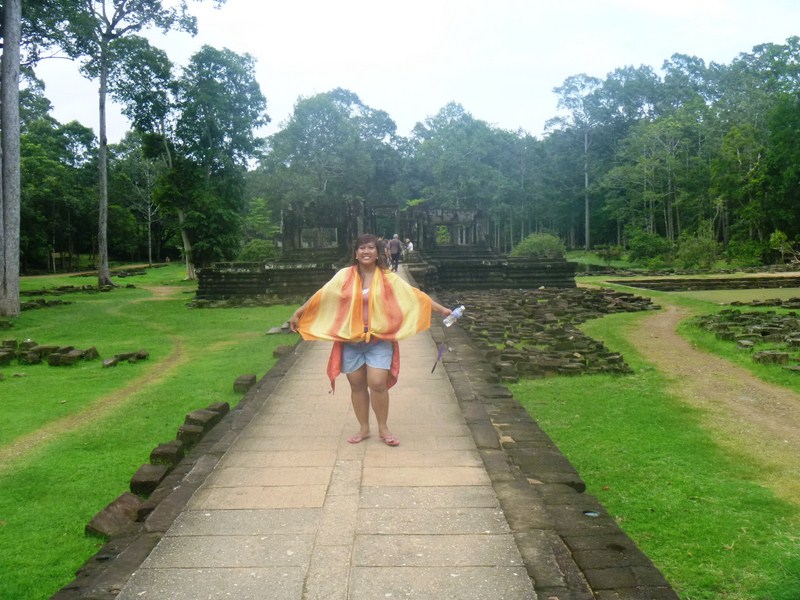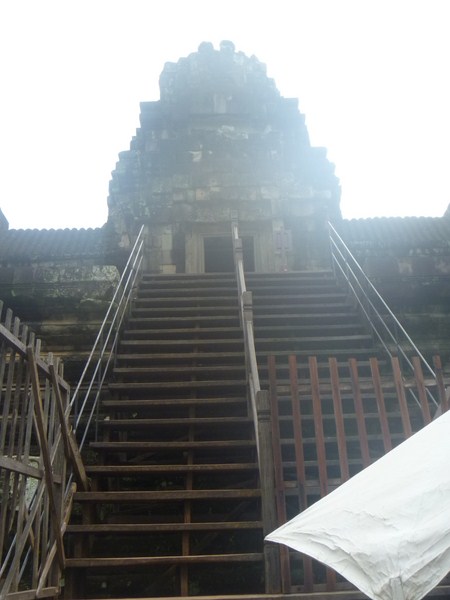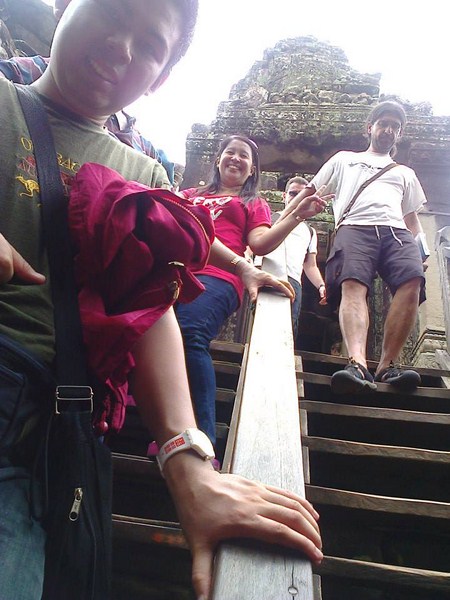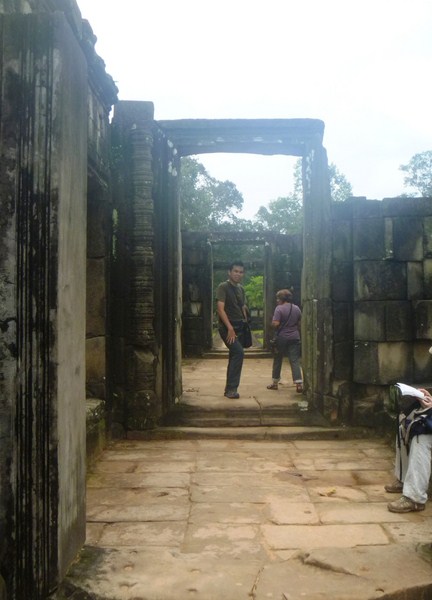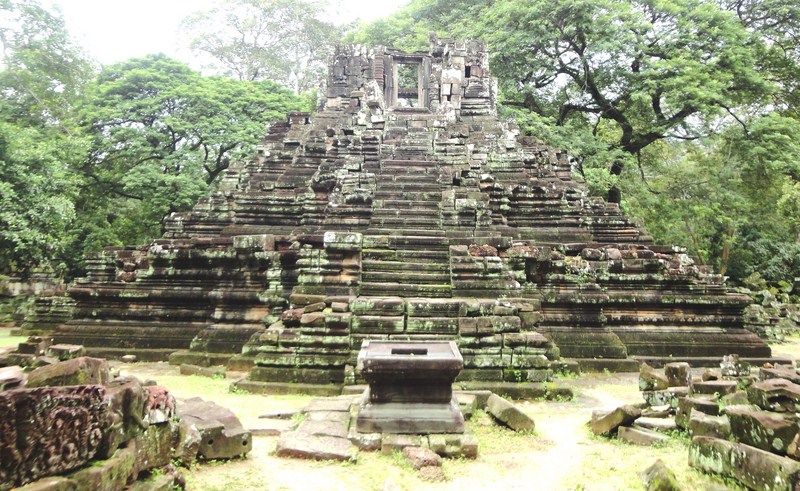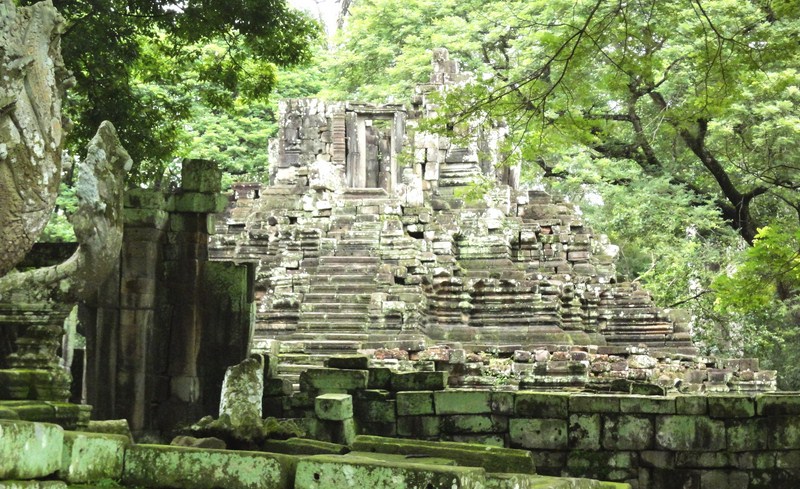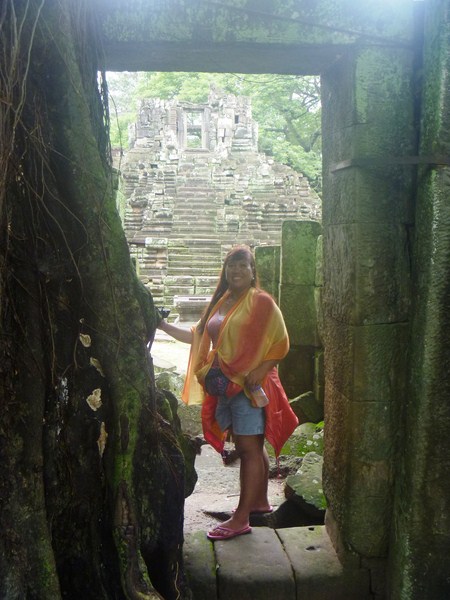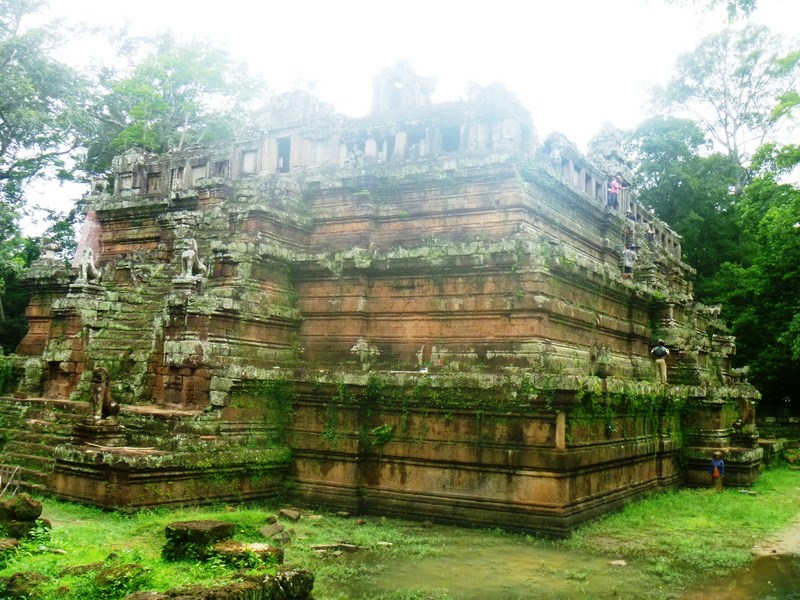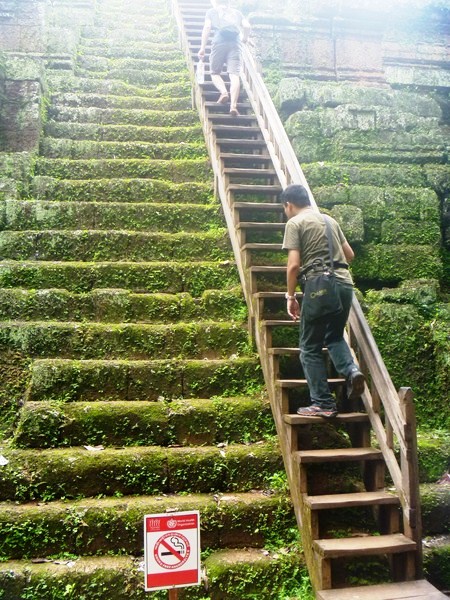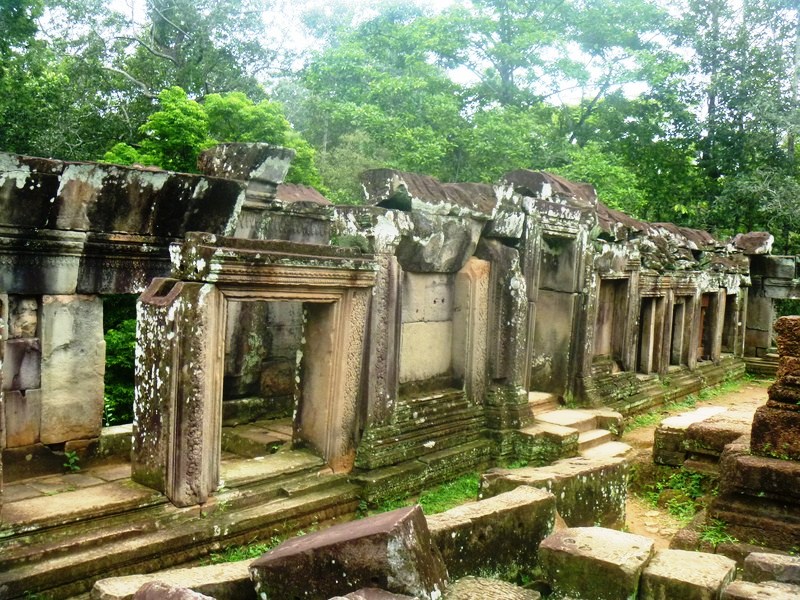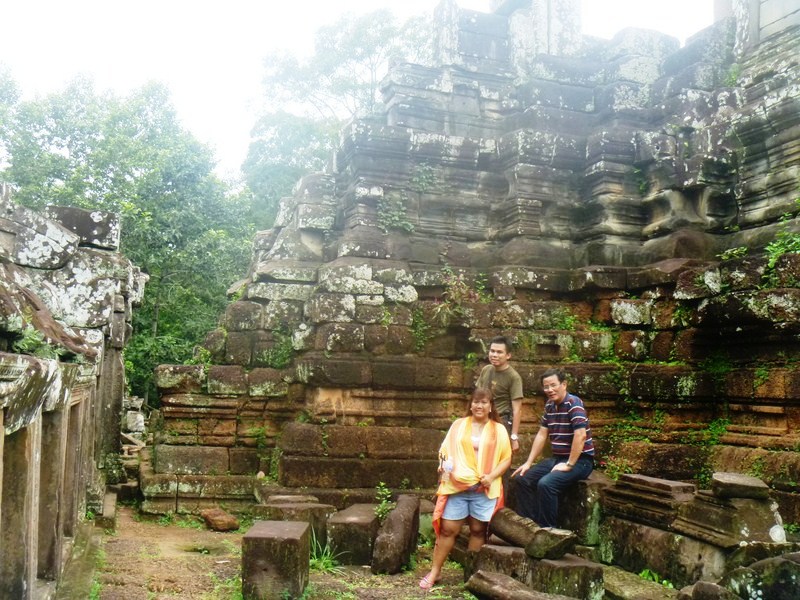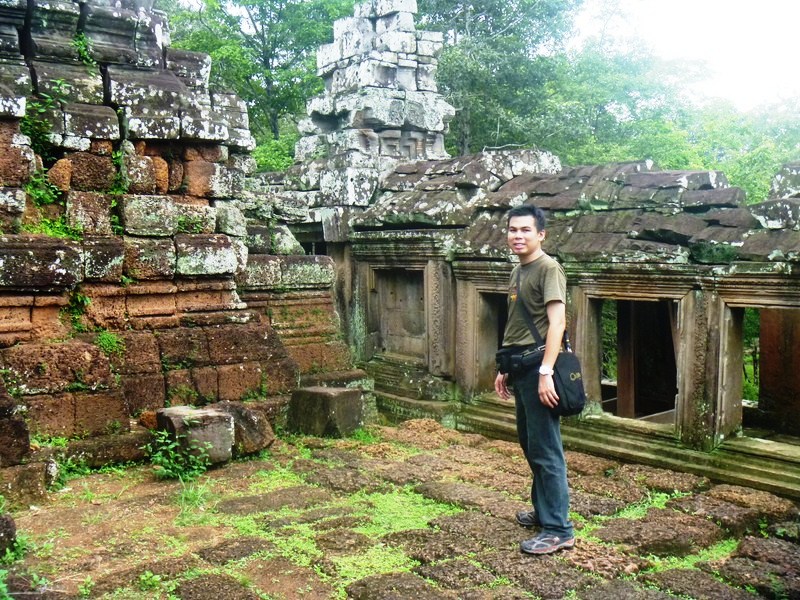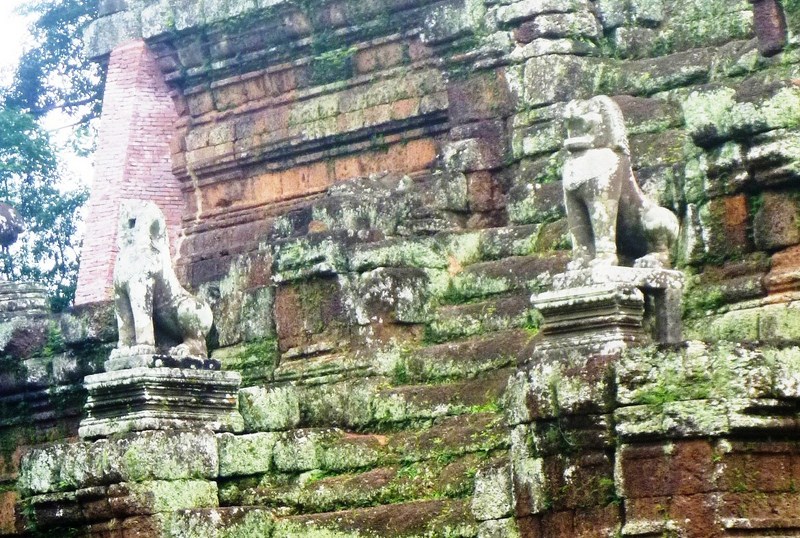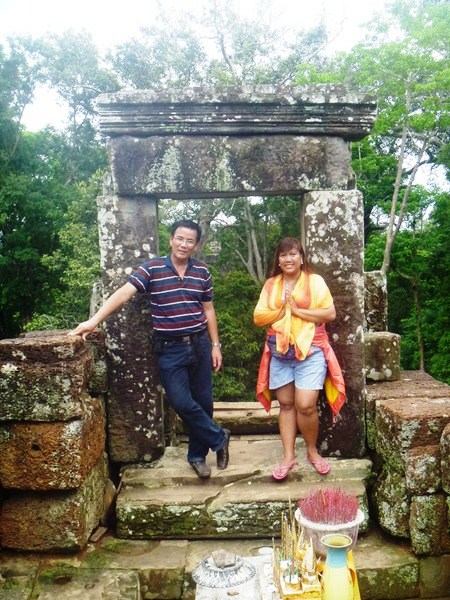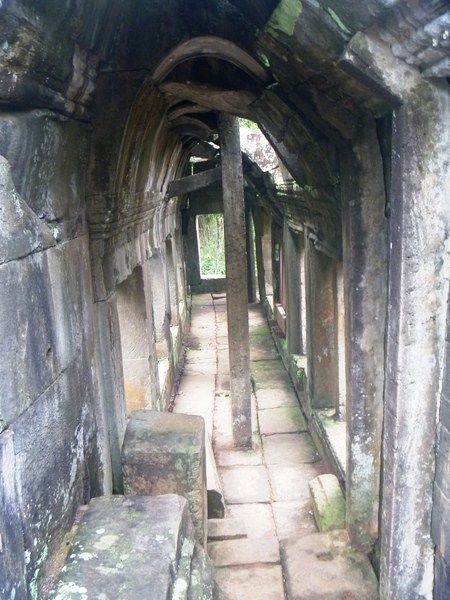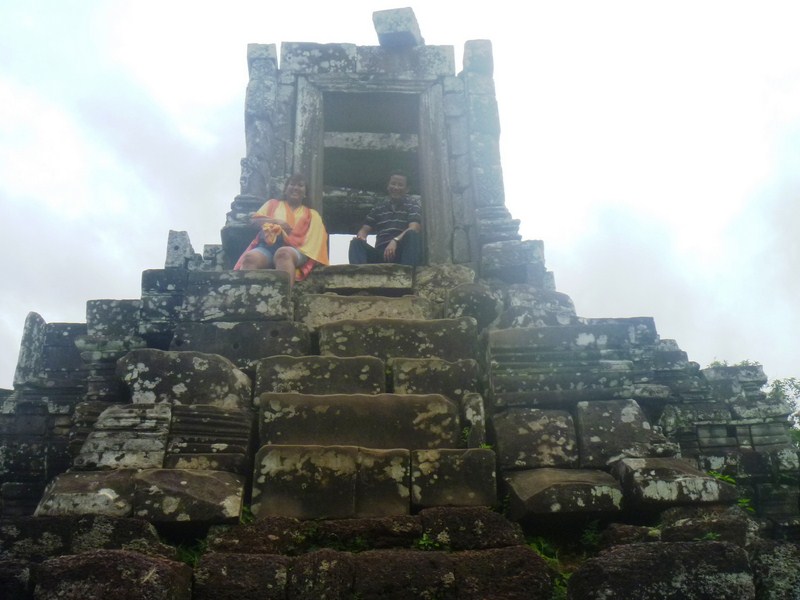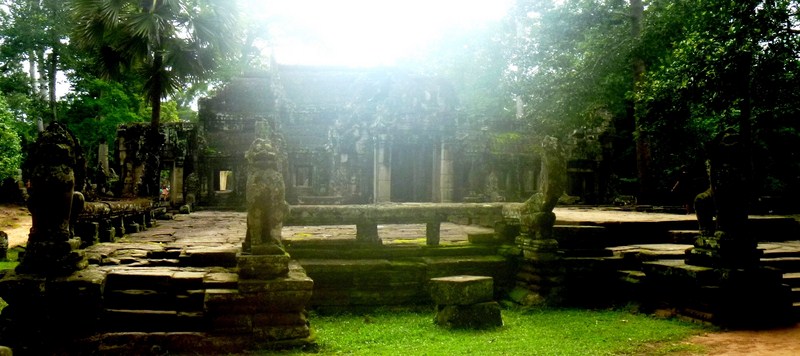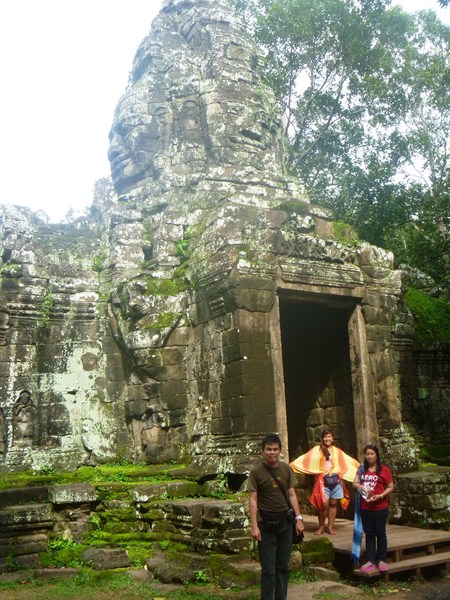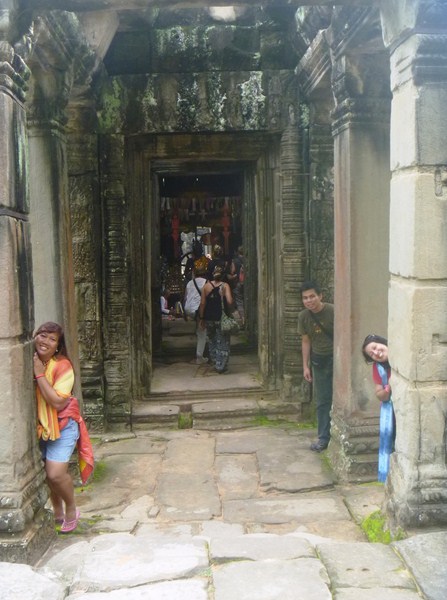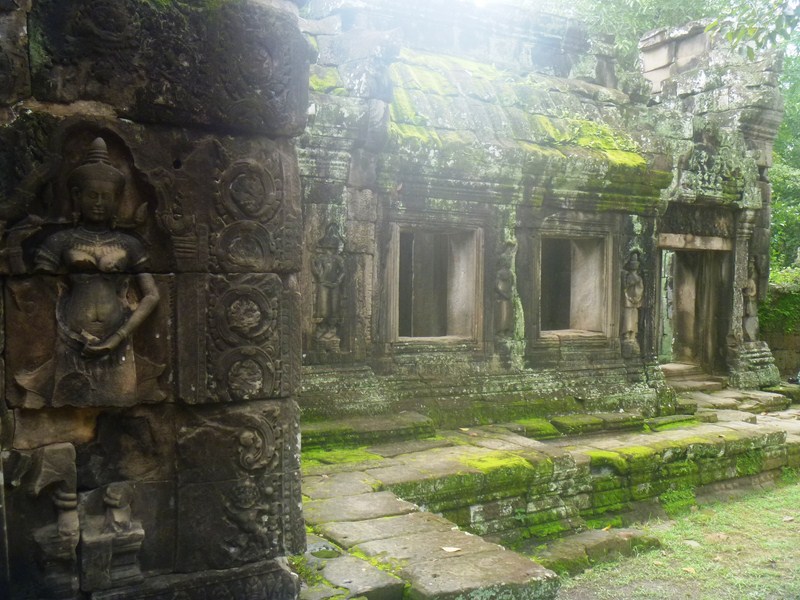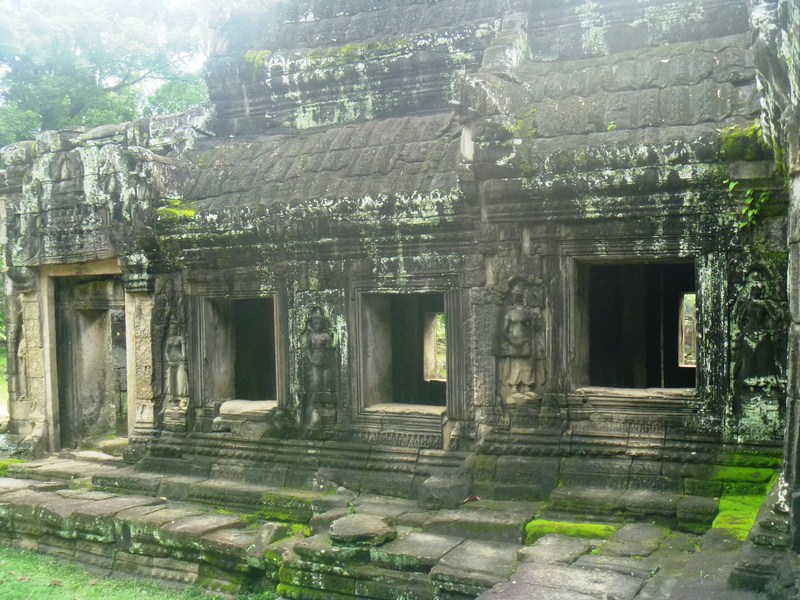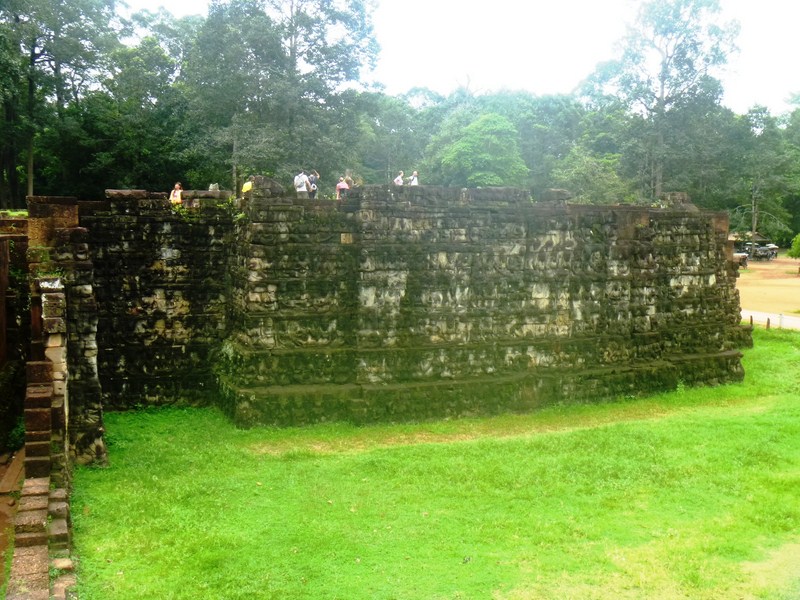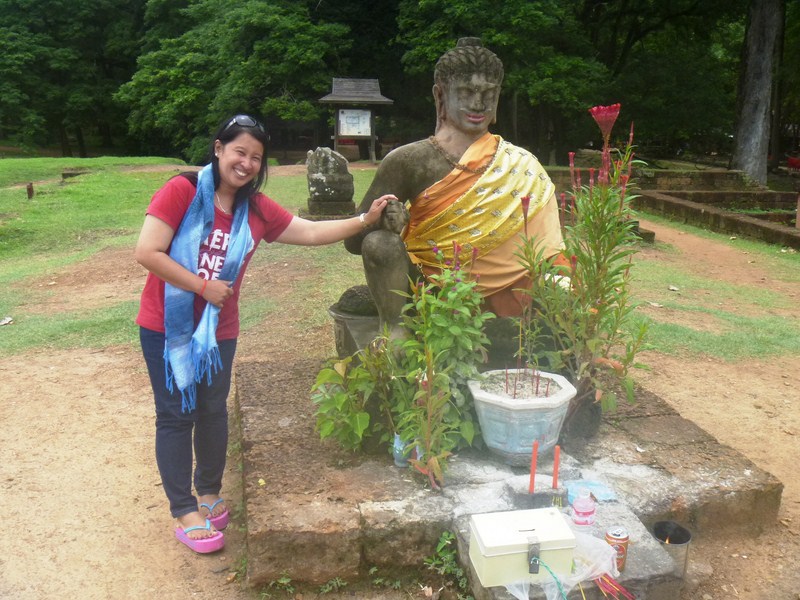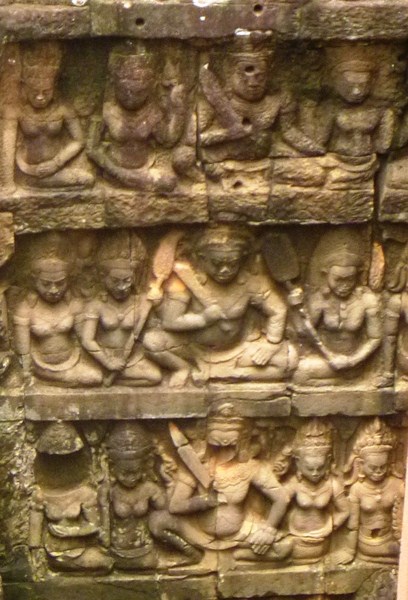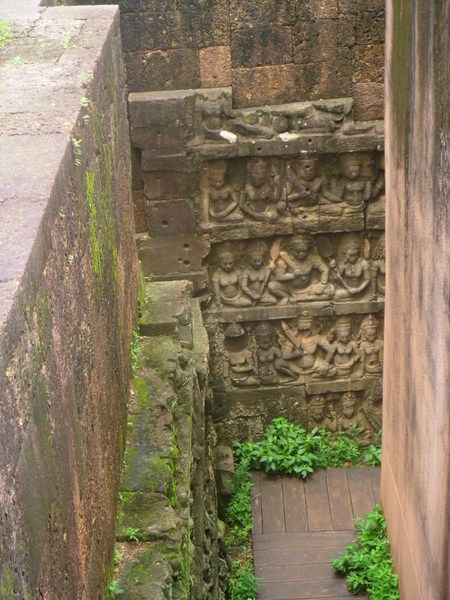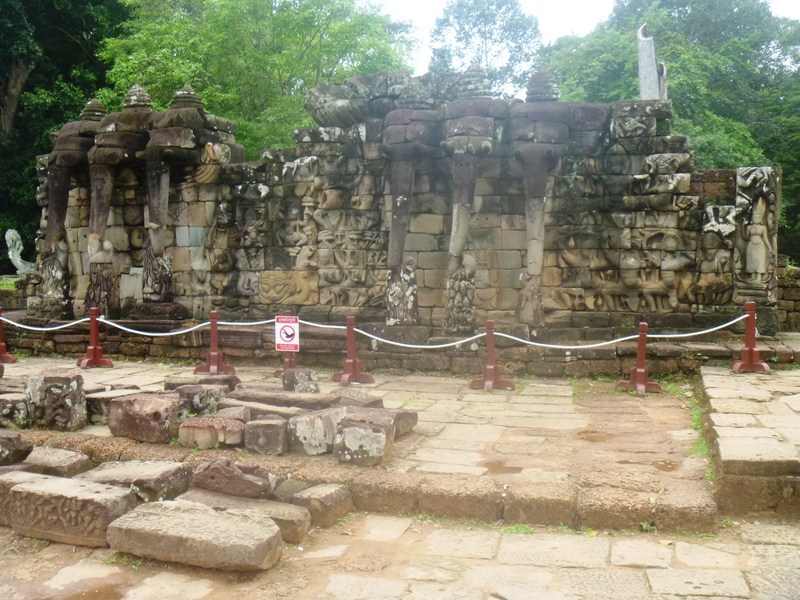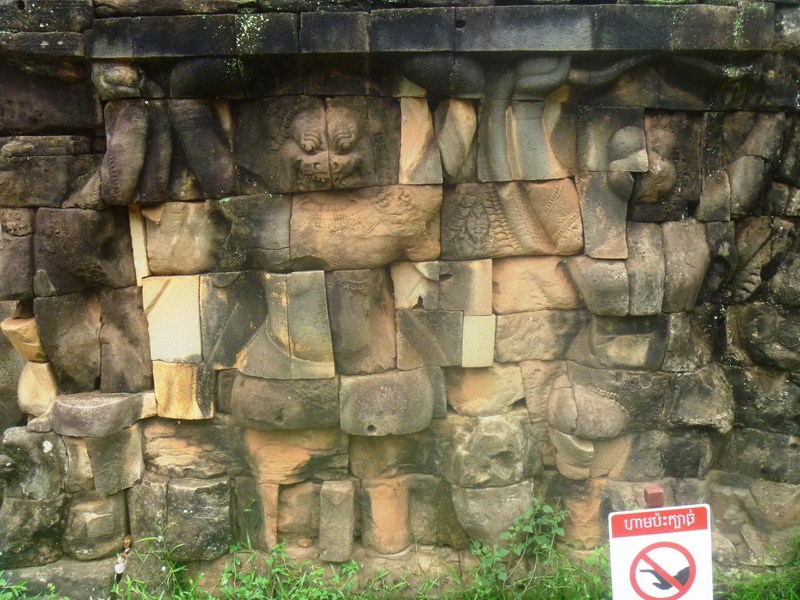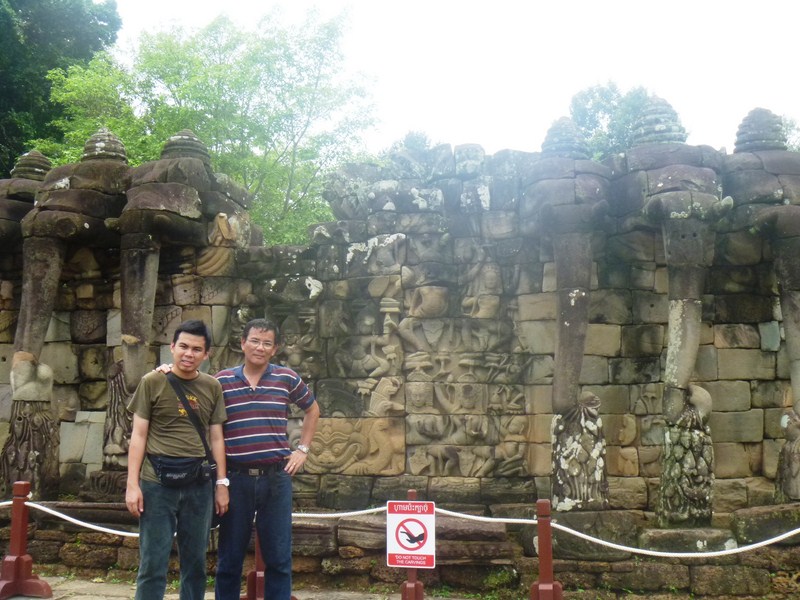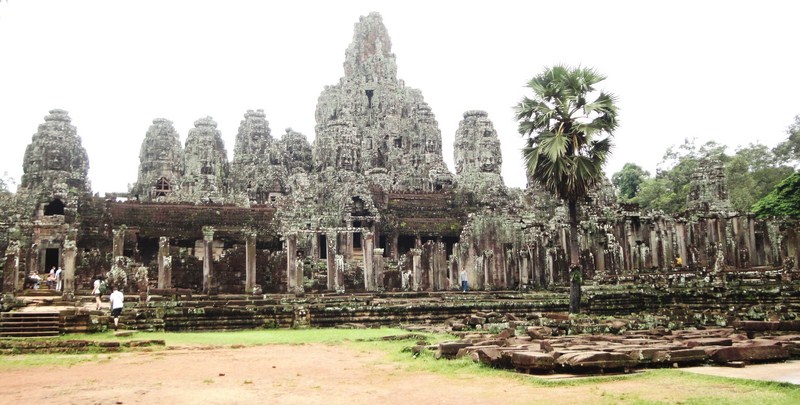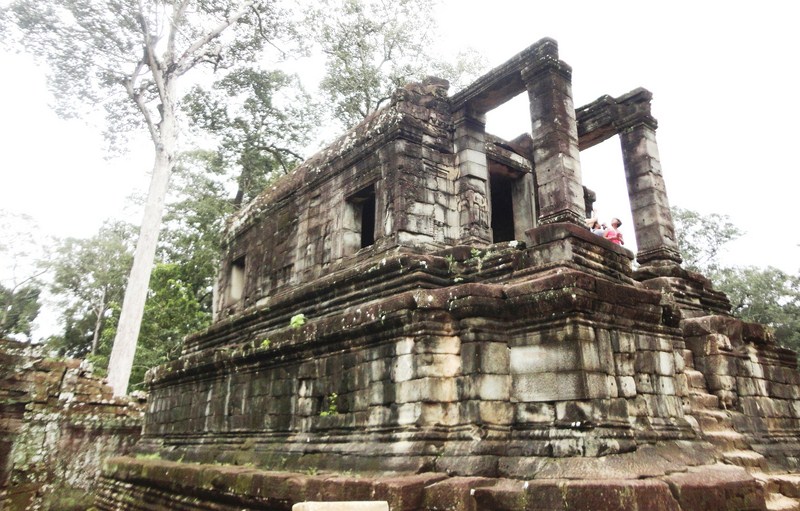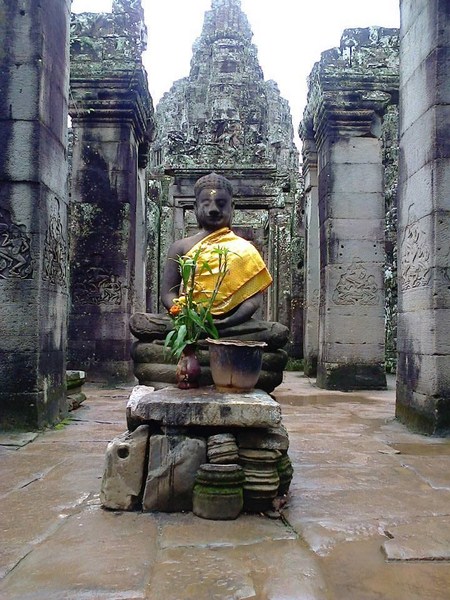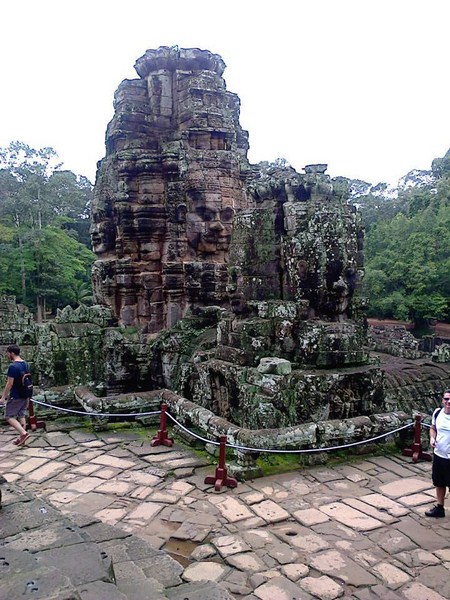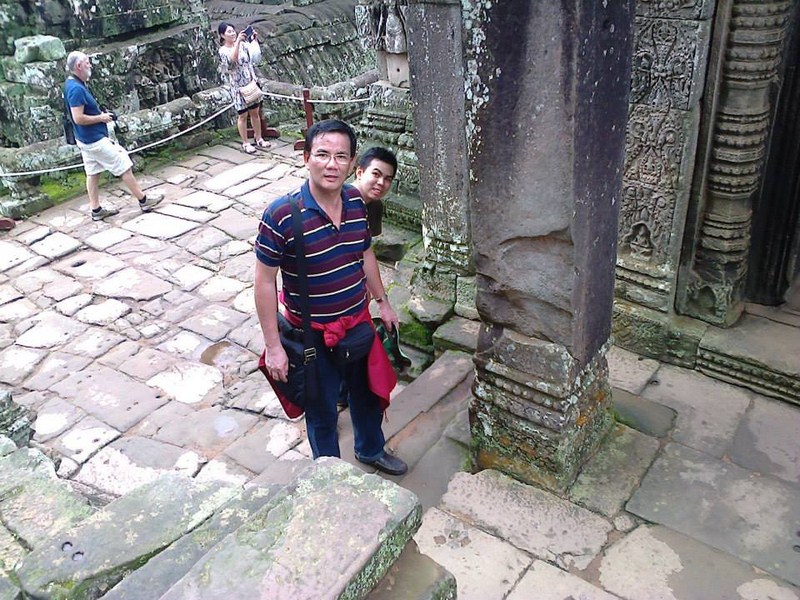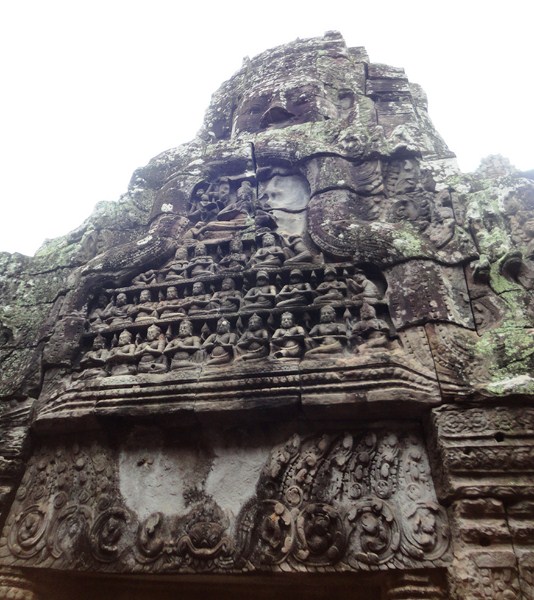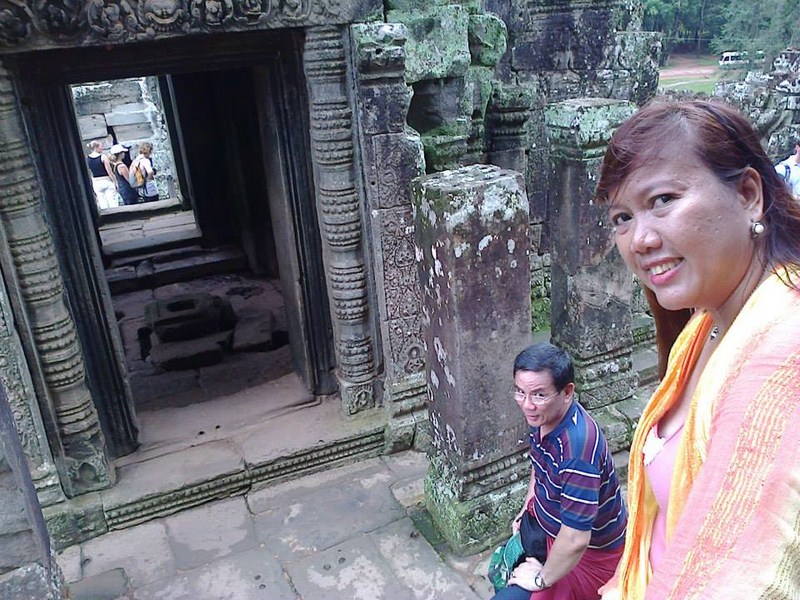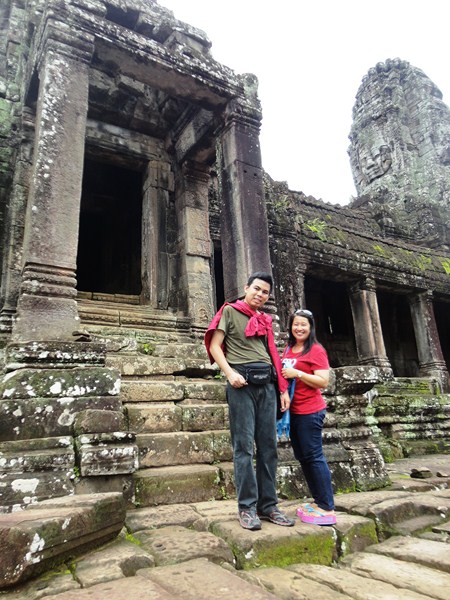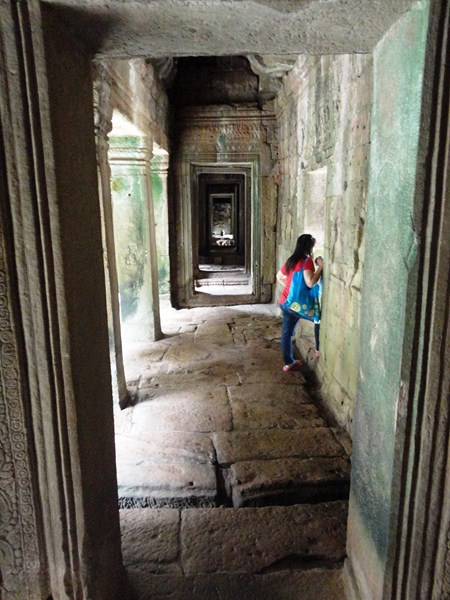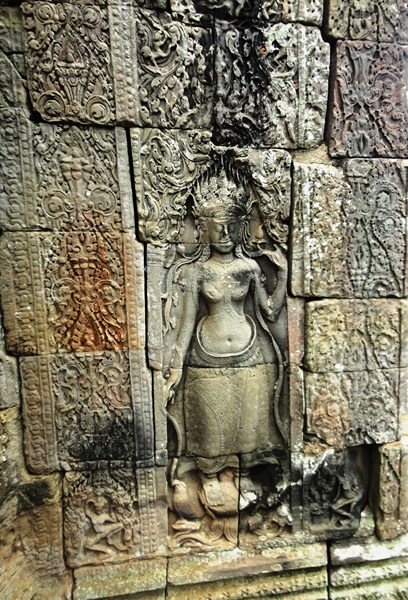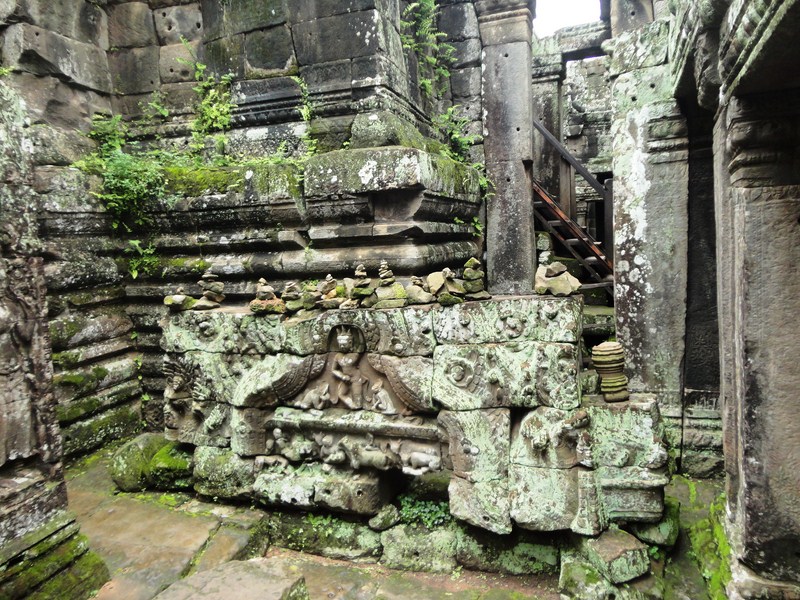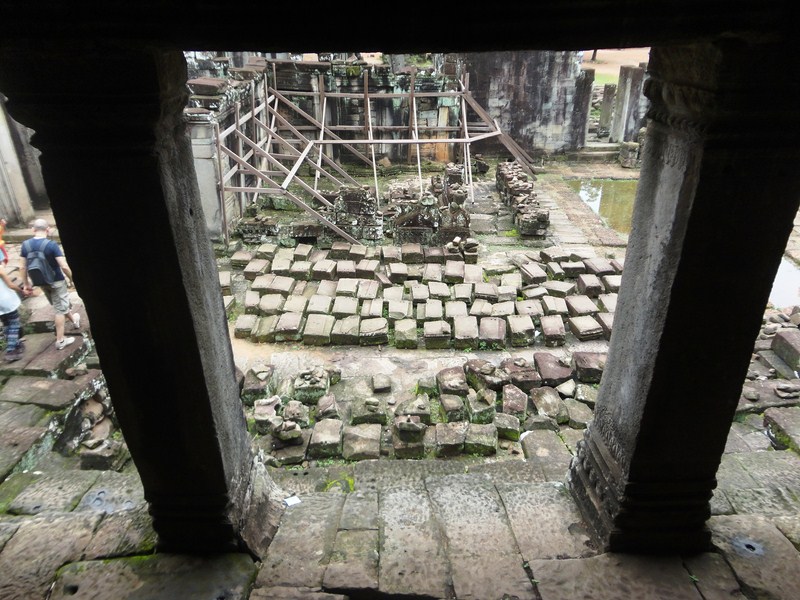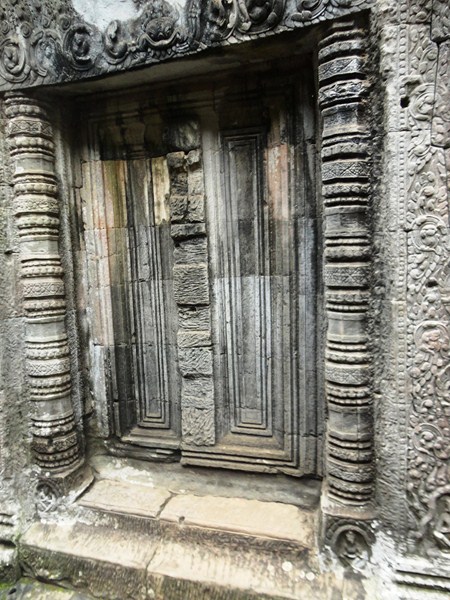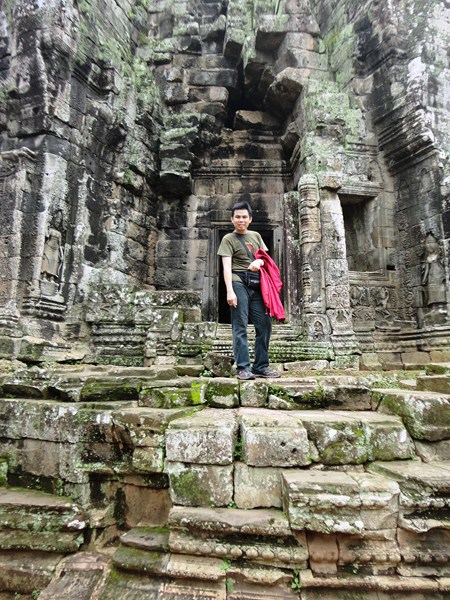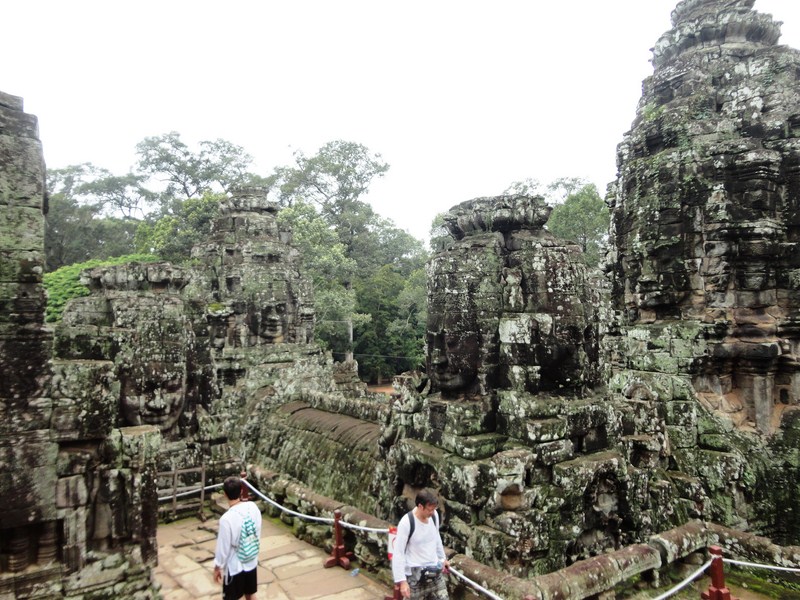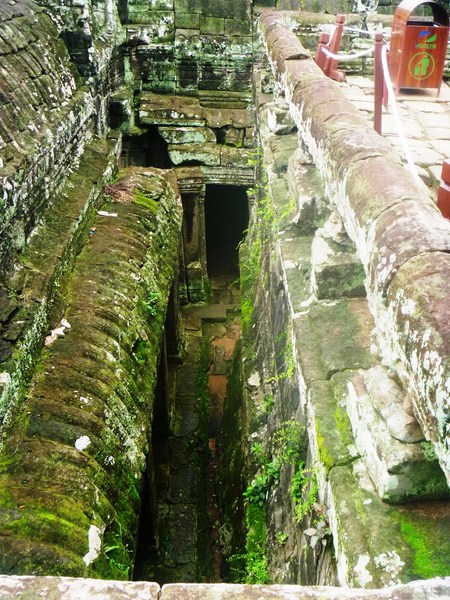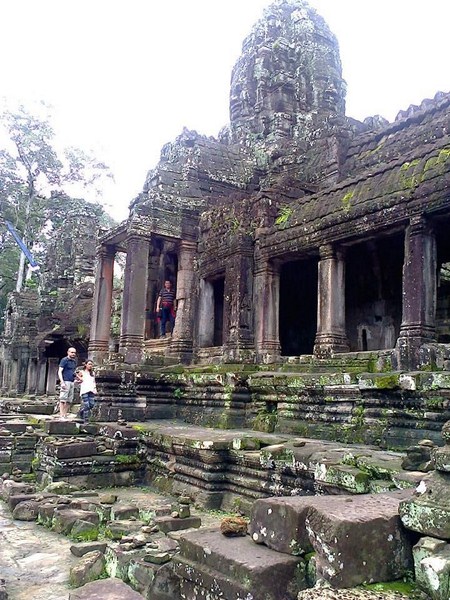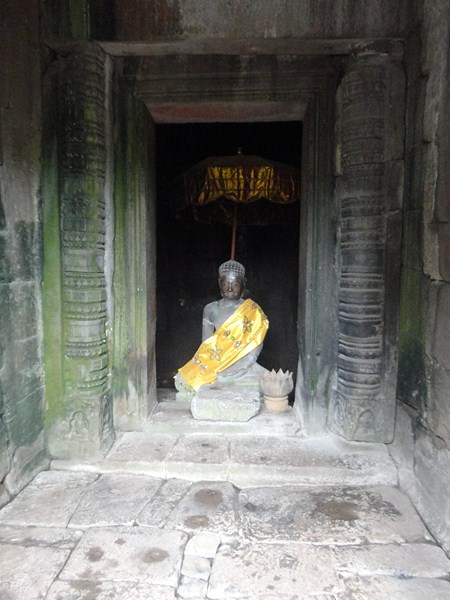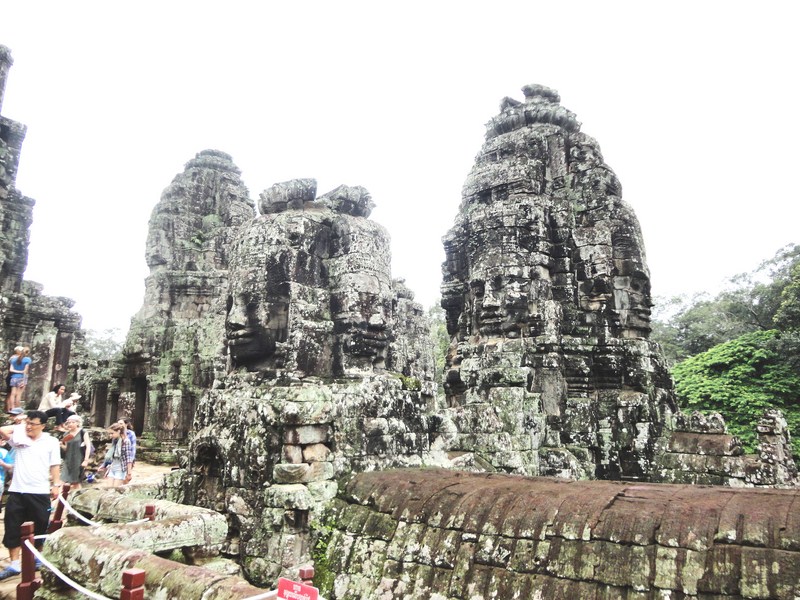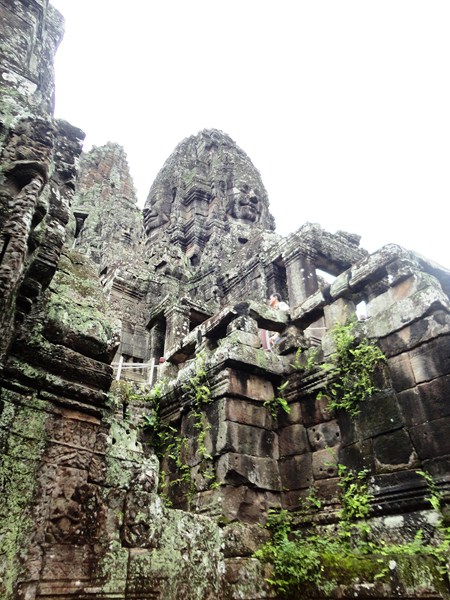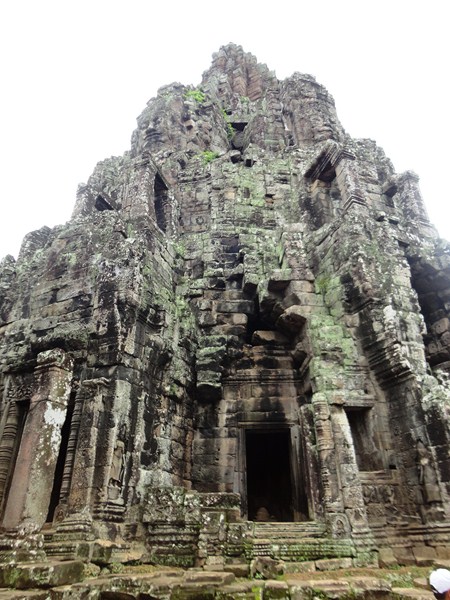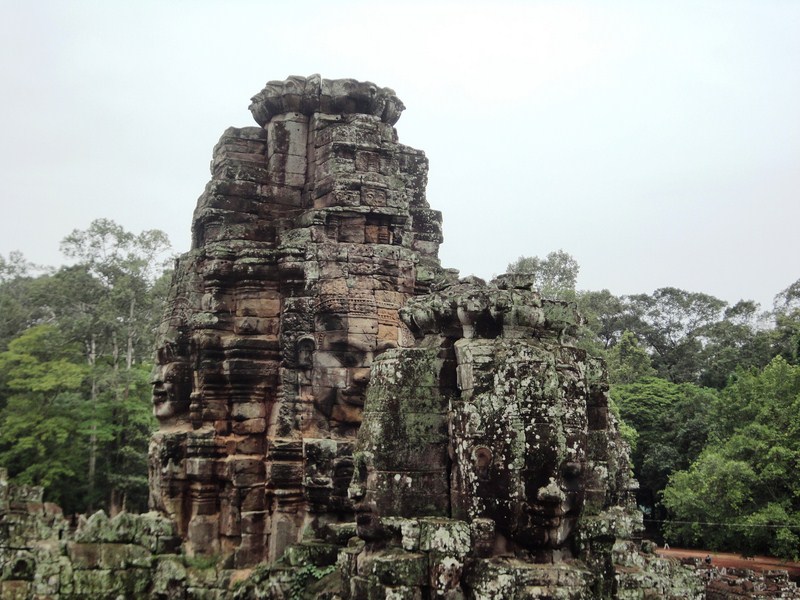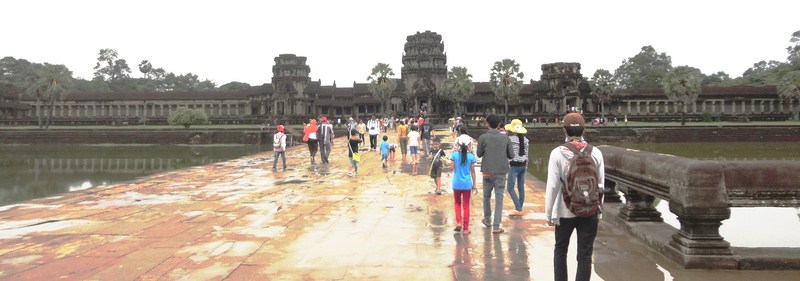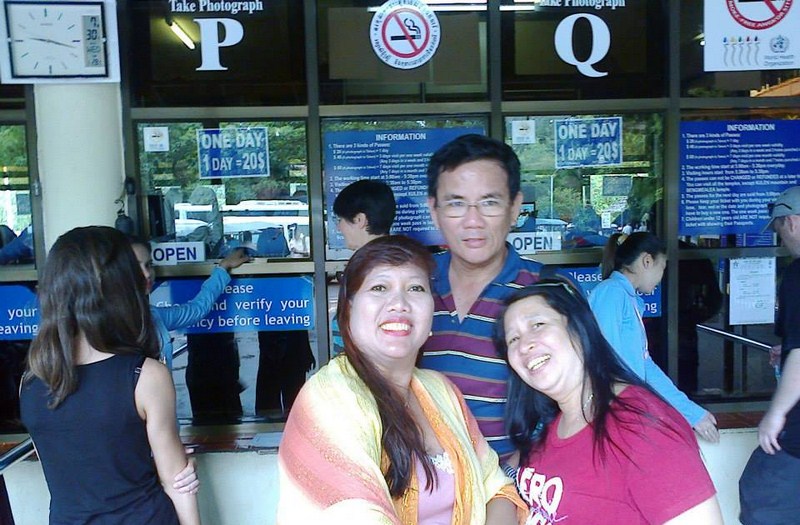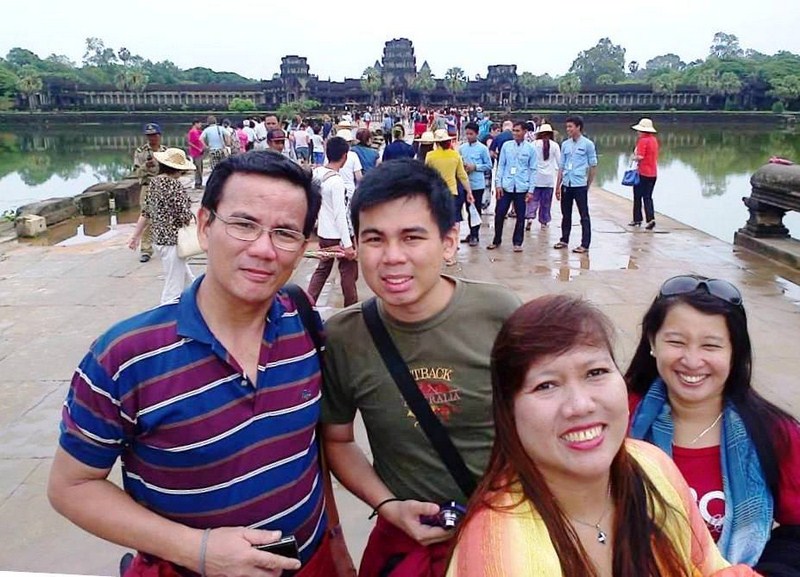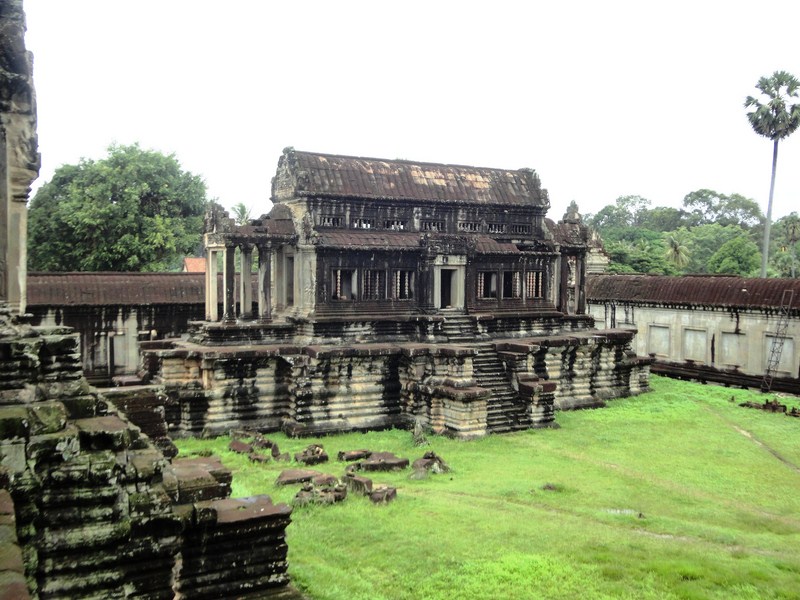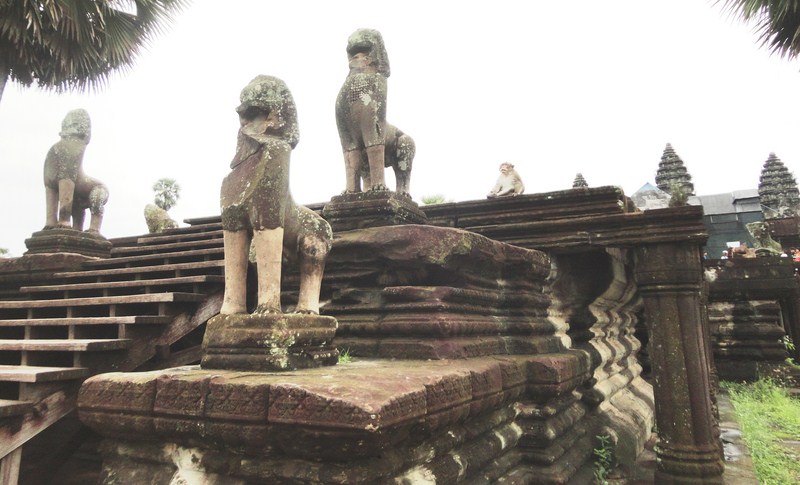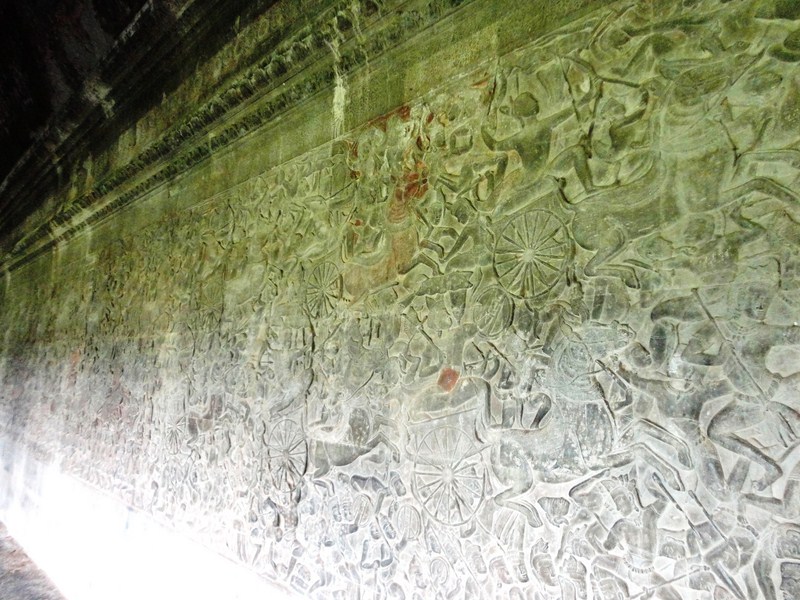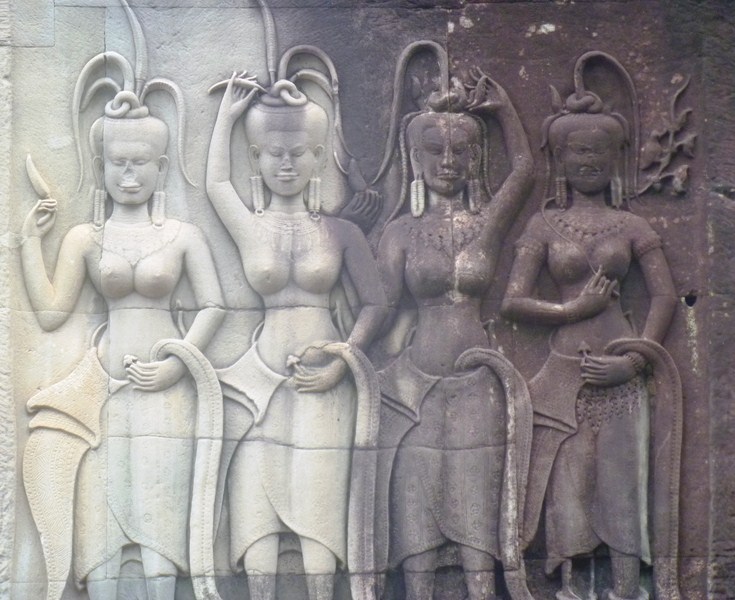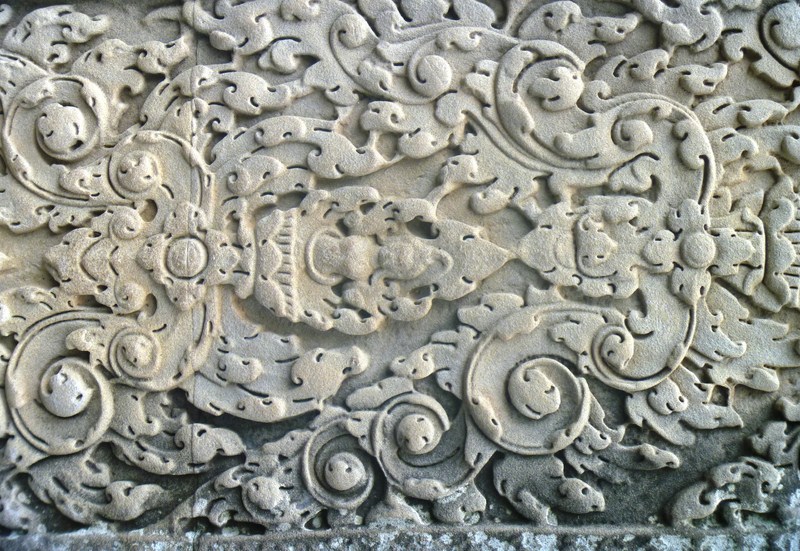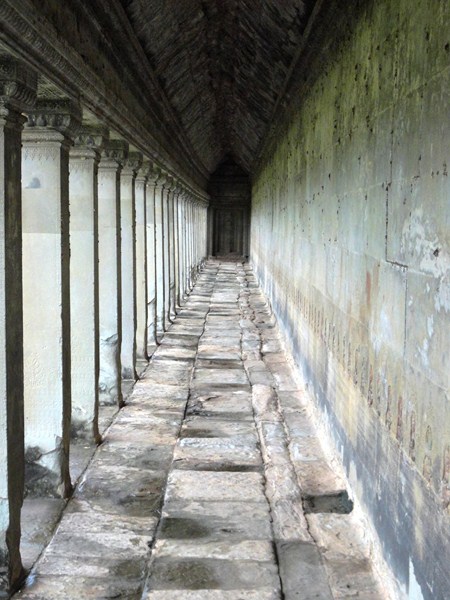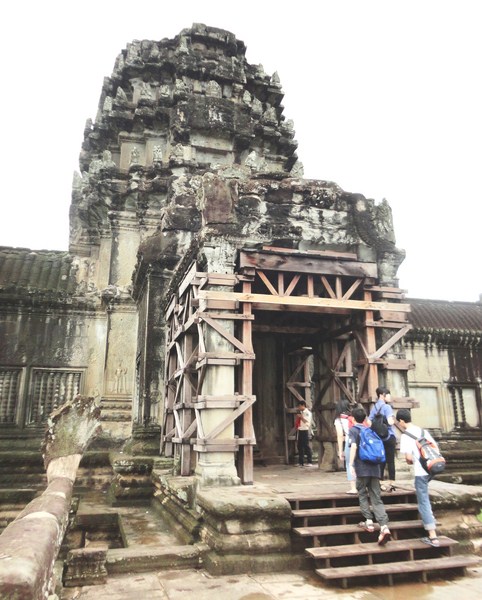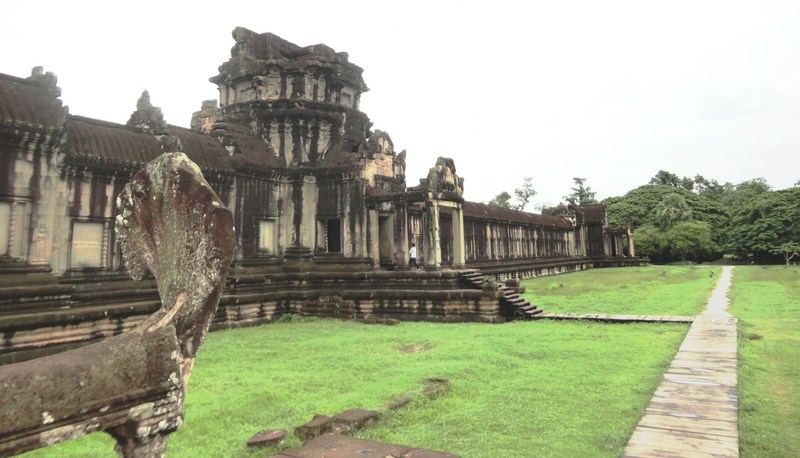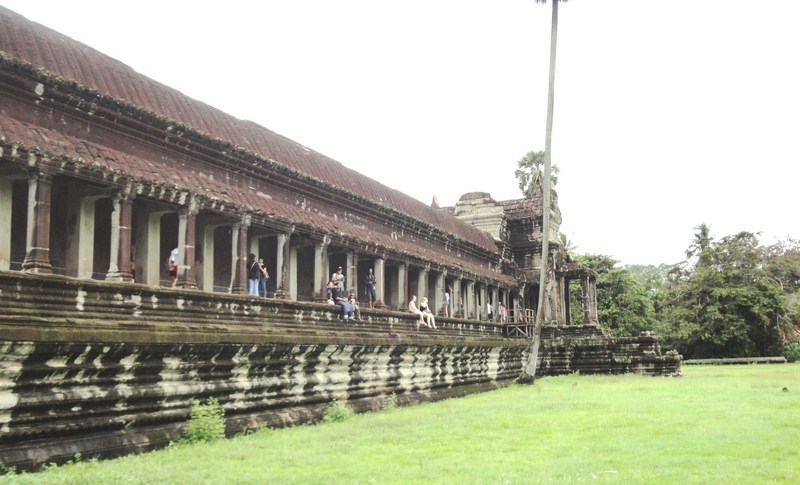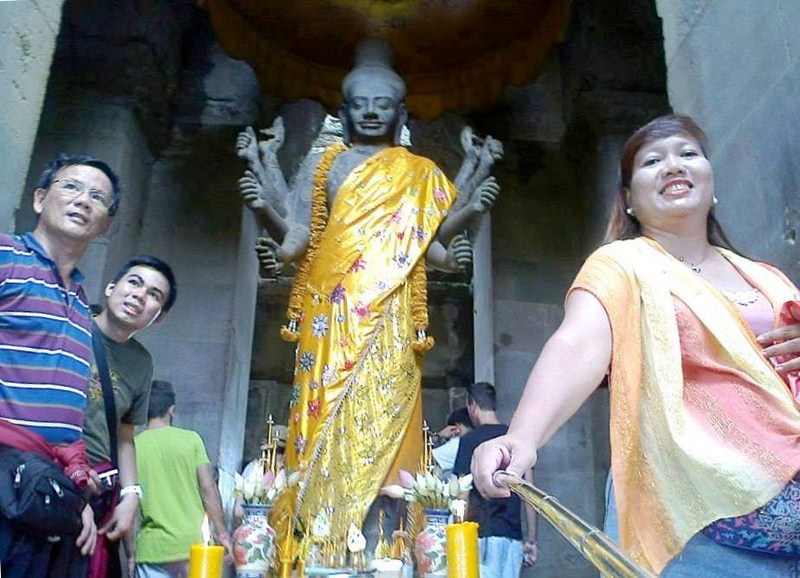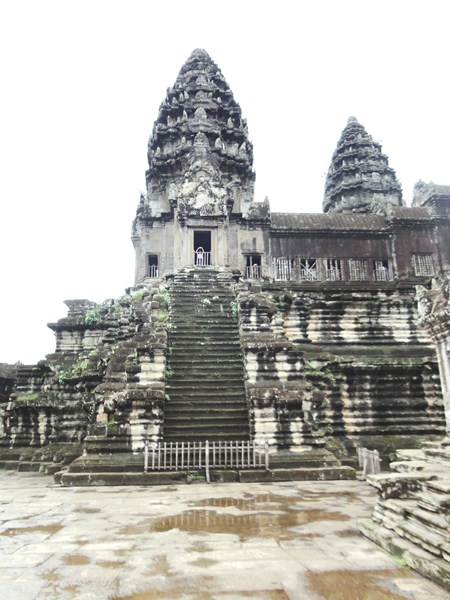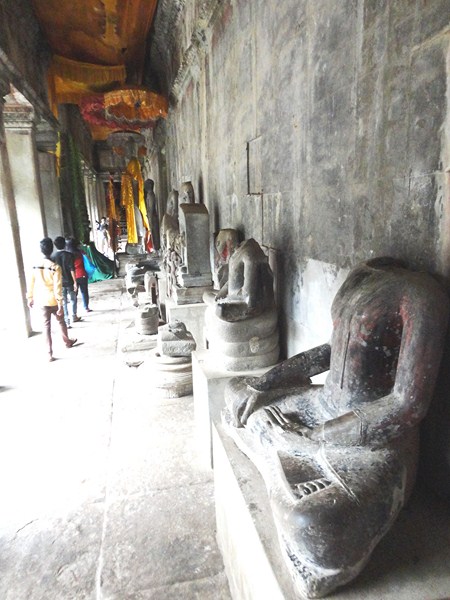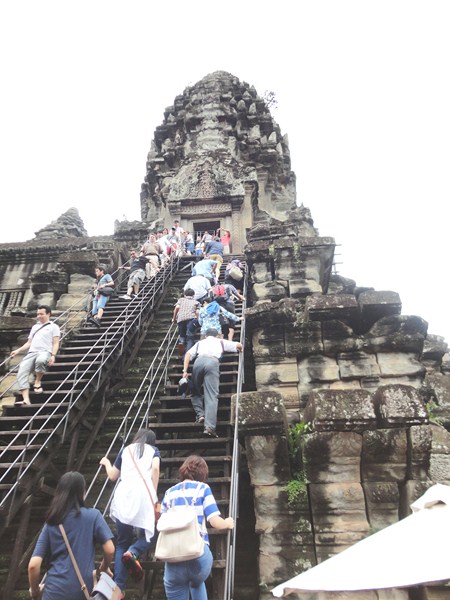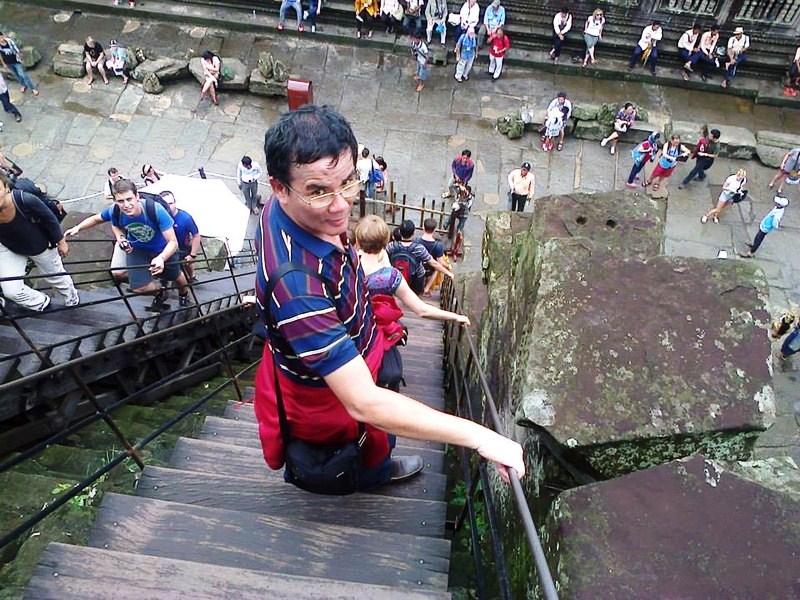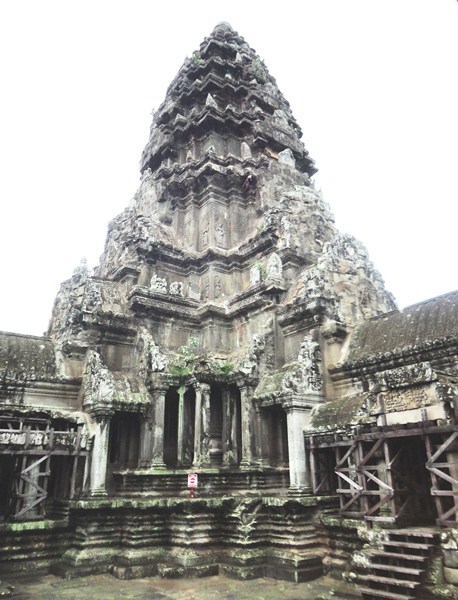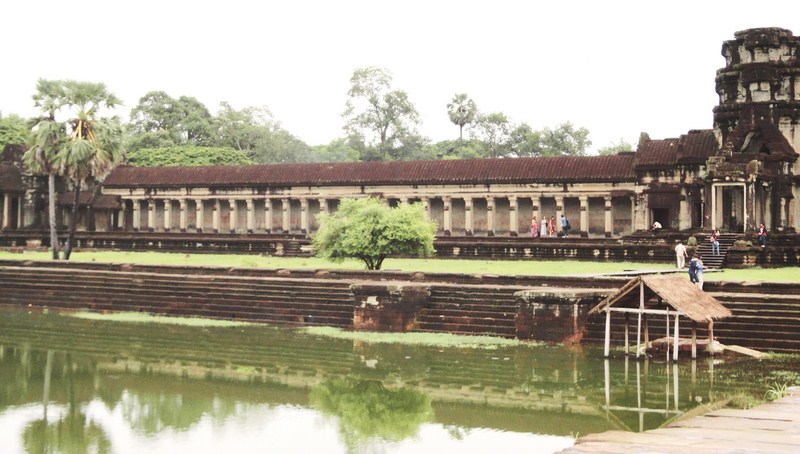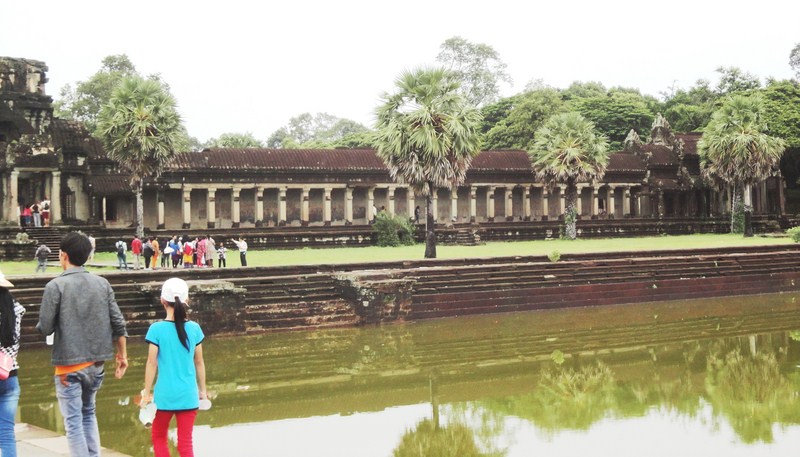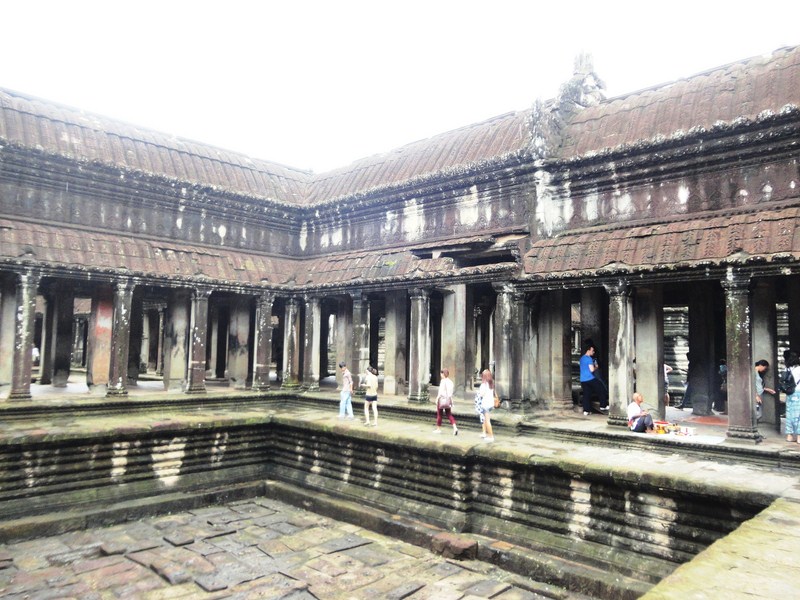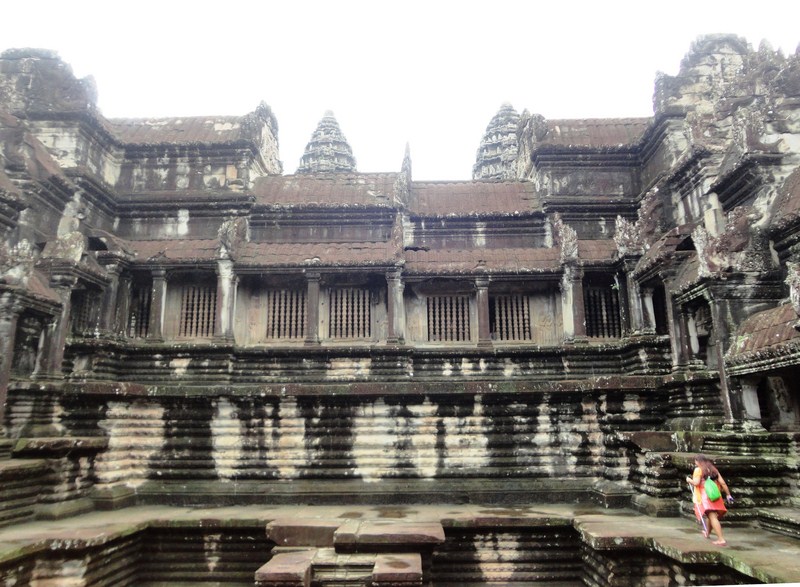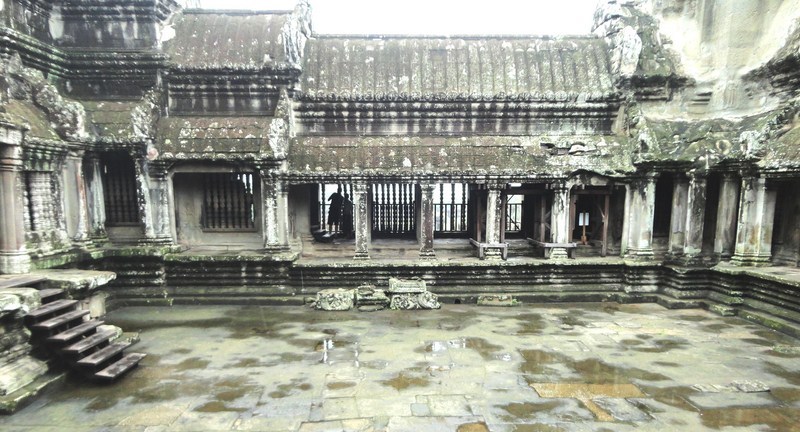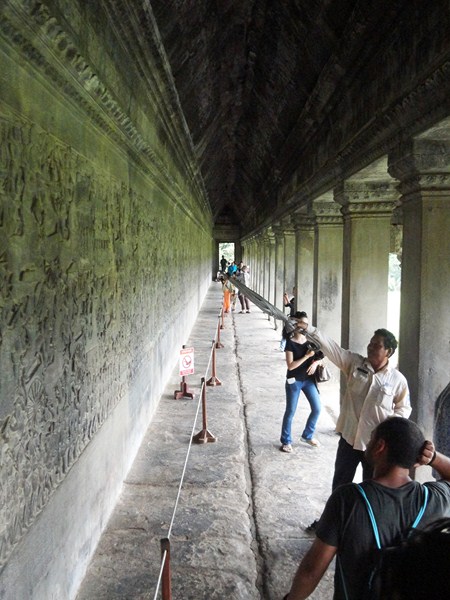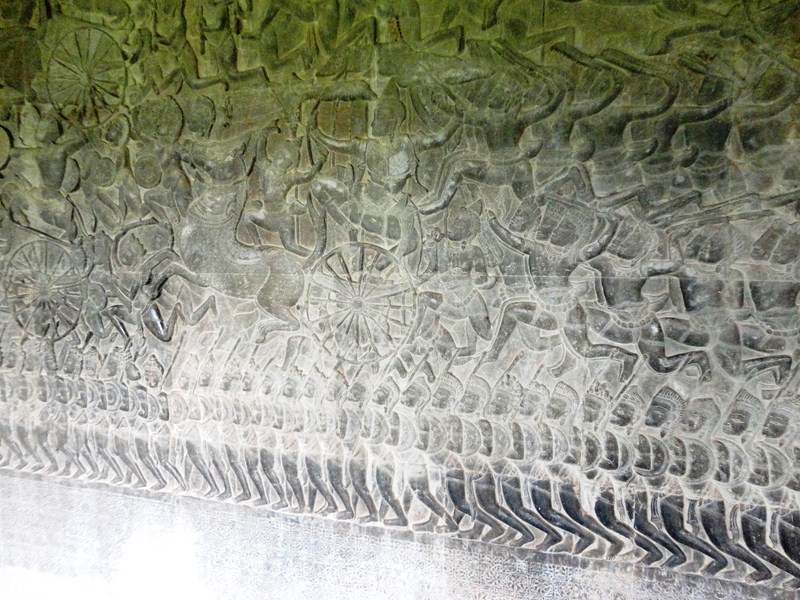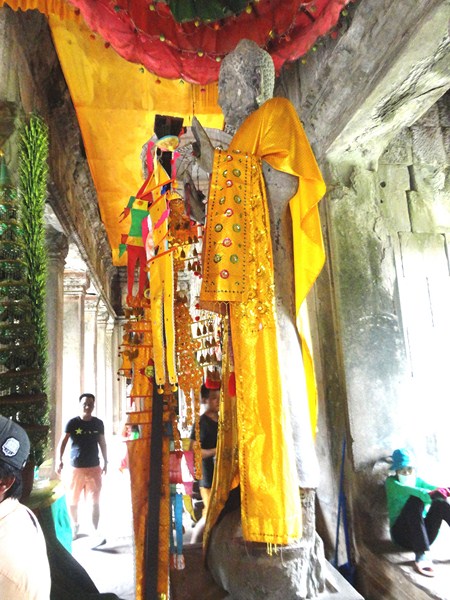The small and elegant, single-towered Thommanon Temple, one of a pair of Hindu temples built during the reign of Suryavarman II (1113–1150), is located east of the Gate of Victory of Angkor Thom, north and direct opposite of Chau Say Tevoda, around 100m away from the ancient bridge called Spean Thma and 500 m. east of the Victory Gate (just a few minutes off Victory Way just before you reach the Siem Reap River) on the way to Ta Keo. The temple, dedicated to Shiva and Vishnu, is part of the UNESCO World Heritage Site (inscribed by UNESCO in 1992 titled Angkor).
Check out “Chau Say Tevoda“
Like the other temples in the region, it’s believed that Thommanon was deserted at some point in the 16th century. In the 1960s, a full and extensive restoration, funded by the École française d’Extrême-Orient (EFEO), was undertaken by French archaeologists who restored the temple and added concrete ceilings.
Thommanon has an east-facing central sanctuary, crowned by a tower (prasat), which can be accessed, from the east, via an entrance building (gopura), and a smaller antechamber (mandapa). The tower’s architectural style is similar to that of the Angkor Wat temple and the nearby Chau Say Tevoda. However, though similar in design, Thommanon is better preserved than Chau Say Tevoda, attributed to the fact that its superstructure does not have stone-enclosed wood beams.
The temple’s adoption of sandstone (which provides a distinct contrast to the surrounding jungle) as the medium for its very well preserved carvings has made it more advanced, in its architectural design, vis-à-vis other mostly wood-based temples in its vicinity. All of its doorways include carved pediments.
However, only the entry gates on the east and the west and the central tower of the main temple are all that remains. The compound walls around the temple have all but disappeared.
Thommanon and Chau Say Thavoda were inferred to have been interlinked to the central tower under one large compound with large gates. The independent library building was separated from the main temple.
As in other Khmer temples, images of devatas, the distinctive carvings of divine female figures which include flower crowns, Cambodian skirts (sampots), necklaces, armbands, belts and ankle bands, are the centre of attraction in Thommanon and are seen in profusion here. The mudras displayed are complex.
The devatas very distinctively grip the flower in a position called by one Angkor researcher as the devata mudra, holding the ring and middle fingers against the thumb, while the index and small finger are extended. This position is also prominent at Angkor Wat. Some believe that the devatas, indicate that they were built during the reign of Jayavarman VI (1080–1113 AD), some time at the end of the 11th century. However, after studying the devatas in Thommanon, there is greater agreement among scholars that it was built by Suryavarman II around the time of Angkor Wat and Beng Mealea from 1113 to 1150 AD.
Check out “Angkor Wat“

